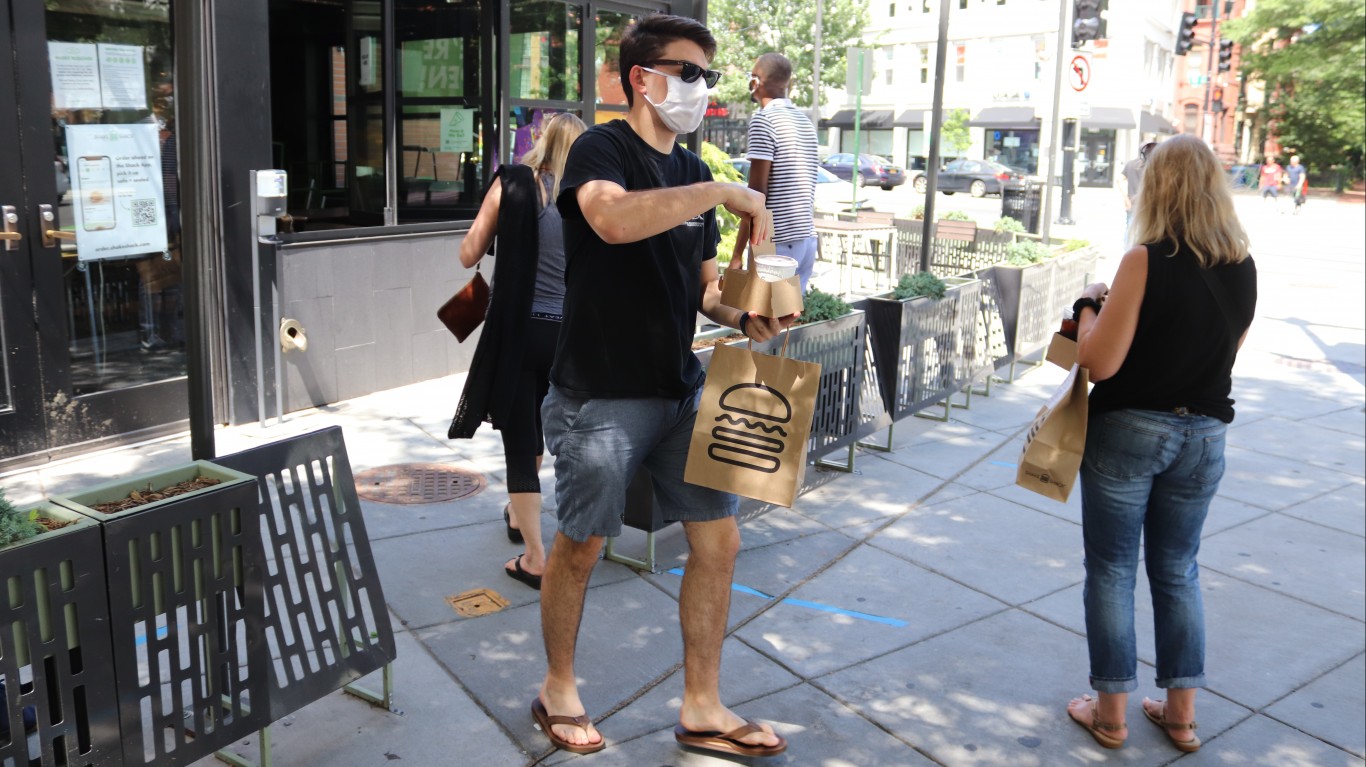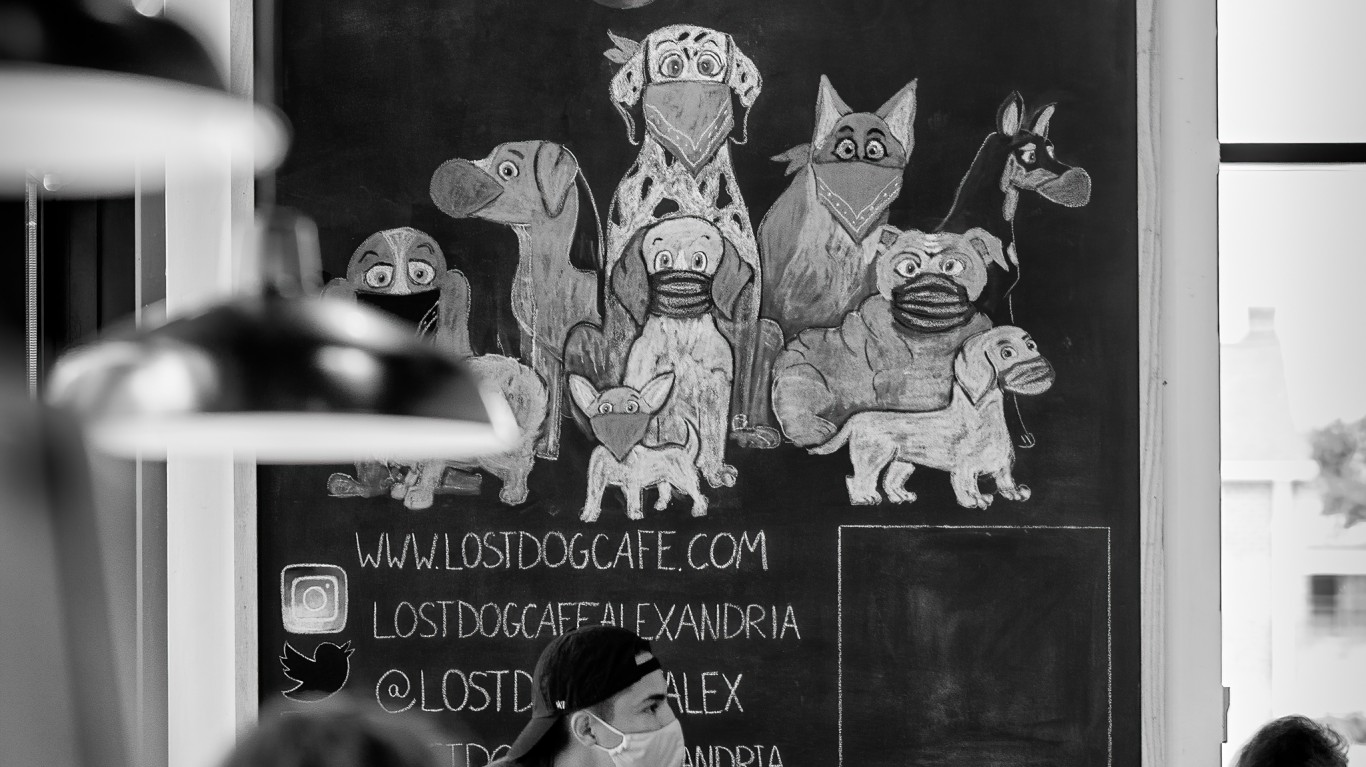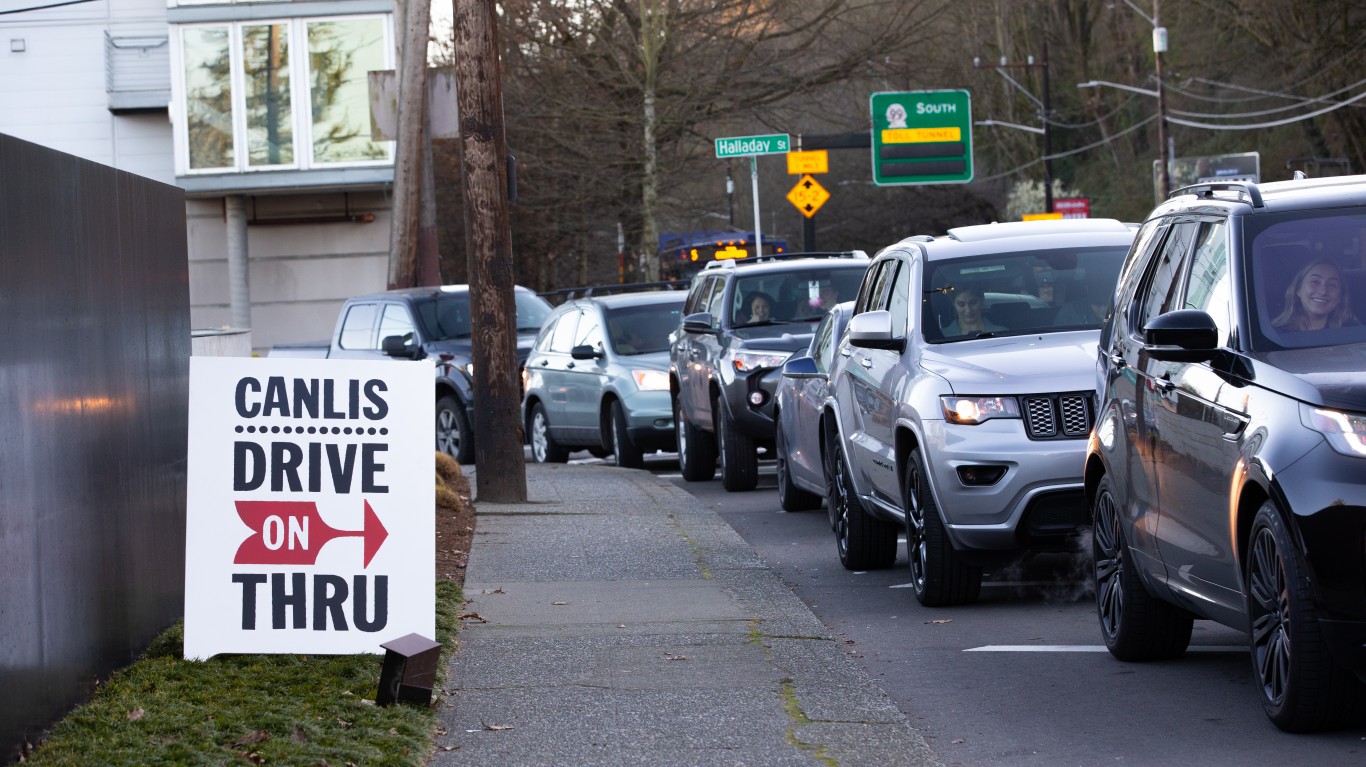
This post may contain links from our sponsors and affiliates, and Flywheel Publishing may receive
compensation for actions taken through them.
Everybody wants the economy to “reopen” — most certainly including restaurateurs, whose industry is among those most drastically affected by the pandemic. Unfortunately, after an early autumn lull, the coronavirus has come roaring back in much of the country as the weather has cooled, and many cities, counties, and states that had eased restrictions on eating places have had to reinstate them, sometimes more harshly than before.
Most states take a similar approach to restaurant regulations, covering such subjects as monitoring employee health, imposing stricter sanitation protocols, and minimizing physical contact between employees and customers. However, there is considerable difference on other matters, such as seating capacity limits. Mostly the restrictions are in reaction to the severity of the pandemic within the state’s borders. These are the states where the virus spread is slowing and where it’s still getting worse.
States differ in their mask requirements (though most states now requires face coverings to be worn inside public spaces, except when people are actually eating or drinking), capacity limits for indoor and sometimes outdoor dining, restrictions on the number of diners allowed at each table, and mandated closing times. These issues, among others, are outlined on a state-by-state basis by a survey, conducted by the National Restaurant Association’s Restaurant Law Center, called Official Return to Work State Guidelines for Foodservice Establishments.
One dramatic change in the regulatory landscape in recent weeks, following spikes in coronavirus cases, is that some states have taken the most restrictive step of banning all indoor dining at least temporarily. The bans are scheduled to expire on various dates in the early weeks of January, but if infection rates remain high, they will almost certainly be extended.
This is terrible news for the restaurant industry. Some establishments have been able to pivot to mostly outdoor dining (especially if they’re in warmer climes) or have been able to struggle along doing just takeout and delivery business. Indoor dining bans or severe capacity restrictions, though, will doubtless cause more restaurants to shut down permanently. The coronavirus has already been responsible for almost all of the saddest restaurant closings of 2020.
Click here to see restaurant reopening restrictions in every state.
Click here to see our detailed methodology.
24/7 Tempo has reviewed the Restaurant Law Center survey and other updated sources of information, including those published by the states themselves, to assemble this list of coronavirus-based mandates in every state.
Note that, in common with other kinds of information about COVID-19, restaurant protocols change from week to week and sometimes day to day as states and local jurisdictions respond to increased or decreased infection fates, ICU capabilities, and other factors. The information here is accurate today, but may not be tomorrow.
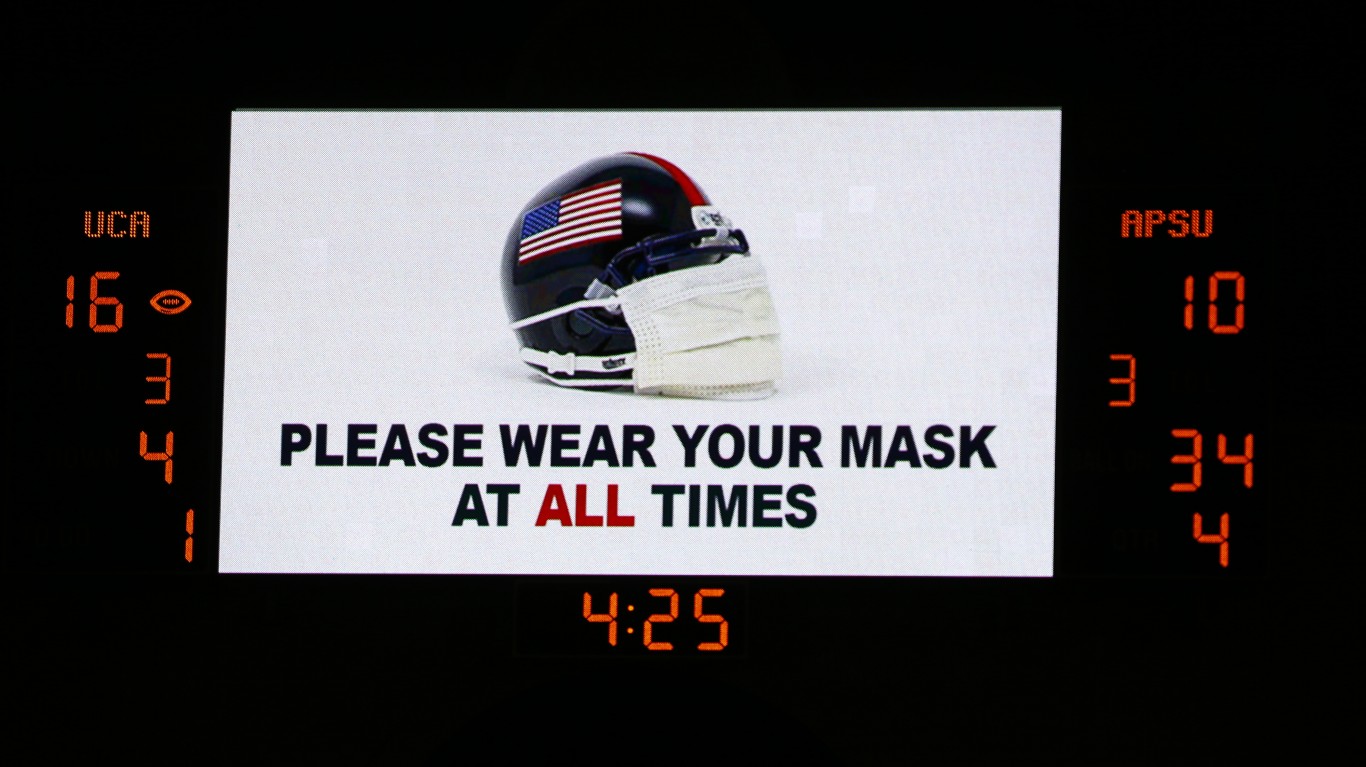
Alabama
> Mask mandate Yes
> Indoor seating capacity: Not specified
> Maximum guests per table: 8
Though Alabama doesn’t restrict restaurants to a specific capacity limit indoors, the rules do require that “Staff will limit the number of customers in the restaurant to those that can be adequately distanced 6 feet apart.” While some states have banned buffets and other self-service food options, Alabama rules state that “self service by guests at drink stations, buffets or salad bars are allowed under the supervision of an employee monitoring social distancing and proper hand sanitizing.”
[in-text-ad]

Alaska
> Mask mandate No (required in some municipalities)
> Indoor seating capacity: 50%
> Maximum guests per table: Not specified
The Alaska Department of Health and Social Services notes that “If more people wore masks, we could slow the spread of COVID-19.” Nonetheless, while some municipalities require masks to be worn in public environments, the state has not mandated them. The department adds a note of humor to its COVID-19 guidelines. A chart that explains what a safe distance looks like” illustrates that it’s “About the length of a 200 LB halibut!” and “About the length of a grizzly bear!”
Arizona
> Mask mandate Yes
> Indoor seating capacity: 50%
> Maximum guests per table: 10
In early December, Gov. Doug Ducey issued an executive order offering new support for the state’s restaurant industry. The terms made it easier for eating places to expand outdoor dining facilities and earmarked $1 million to help in their efforts, as well as providing funding to help restaurants and hotels improve sanitation practices. Though public health professionals asked the state to temporarily ban indoor dining and introduce other new restrictions as COVID-19 cases skyrocketed, Ducey and state Health Department Director Cara Christ refused on the grounds that vaccines would soon be available to Arizona residents.
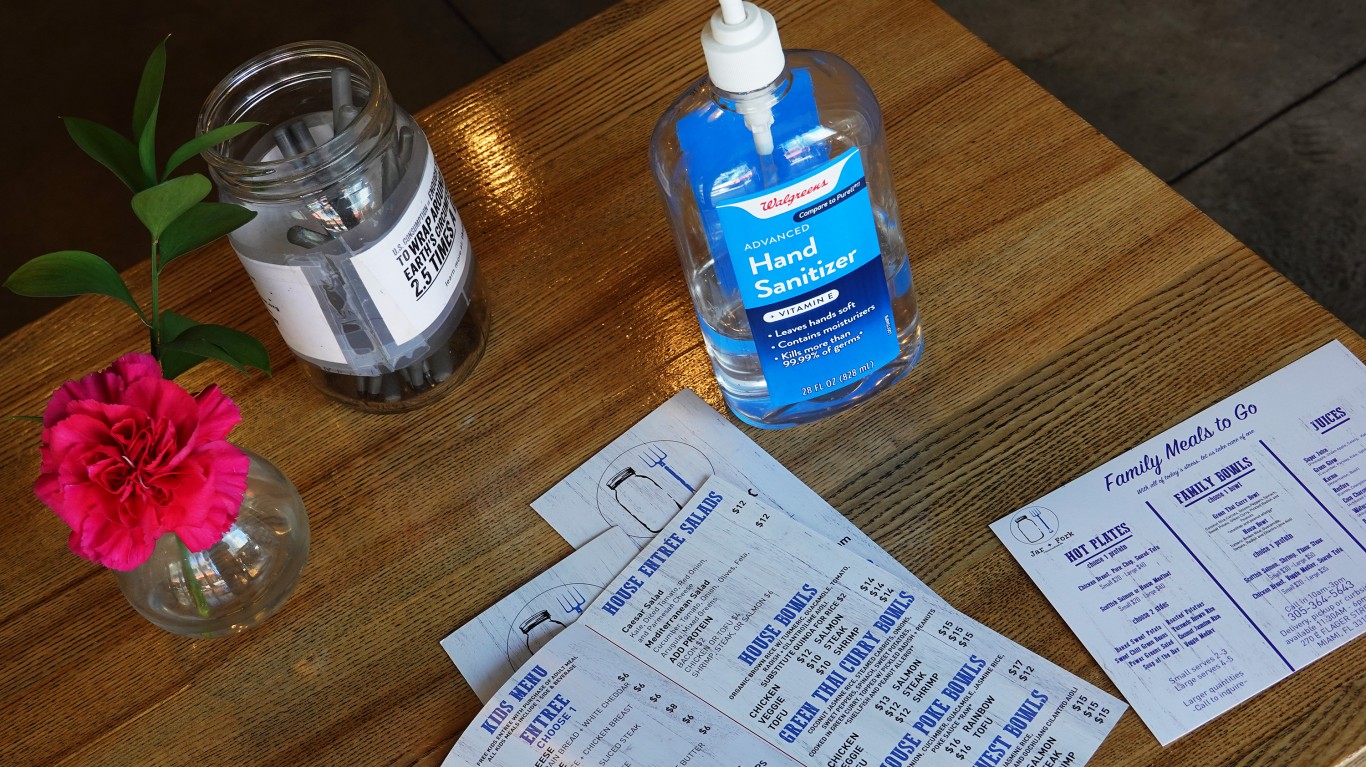
Arkansas
> Mask mandate Yes
> Indoor seating capacity: 66%
> Maximum guests per table: 10
Arkansas restaurants are encouraged to ask customers to pre-order meals in order to minimize the amount of time they spend seated and “to have a senior hour to provide exclusive access to these high-risk individuals.” Salad bars, buffets, and other self-service facilities are allowed under strict guidelines. Patrons may be refused service if they don’t wear masks when entering the establishment and at all other times unless food and drink is being consumed.
[in-text-ad-2]

California
> Mask mandate Yes
> Indoor seating capacity: 0-50%
> Maximum guests per table: Not specified
Faced with the fact that the coronavirus has claimed more than 20,000 lives in the Golden State and infected almost 1.5 million people, Gov. Gavin Newsom issued new lockdown guidelines in early December. These divided the state into five regions. In those in which the available ICU capacity falls below 15%, both indoor and outdoor dining are banned. The order has already affected the LA and San Francisco Bay areas, among others, where restaurants are limited to takeout and delivery only. Meanwhile, a judge in San Diego County has ruled that restaurants in that jurisdiction may remain open for the time being, pending resolution of a lawsuit filed by two adult entertainment clubs that offer food service.

Colorado
> Mask mandate Yes
> Indoor seating capacity: 0-50%
> Maximum guests per table: 10
Colorado classifies counties according to a six color-coded COVID-19 dial, reflecting each county’s COVID-19 outbreak. Green limits restaurants to 50% capacity or 500 people, whichever is fewer. Blue sets the limit at 50% or 175 people, yellow at 50% or 50 people, or “up to 100 people within their usable space” as calculated with a distancing tool supplied by the state. Orange (high risk) sets the limit at 25% or 50 people; red (severe risk) bans all indoor dining, though takeout, delivery, and distanced outdoor dining are allowed; and purple (extreme risk) allows only takeout and delivery.
[in-text-ad]
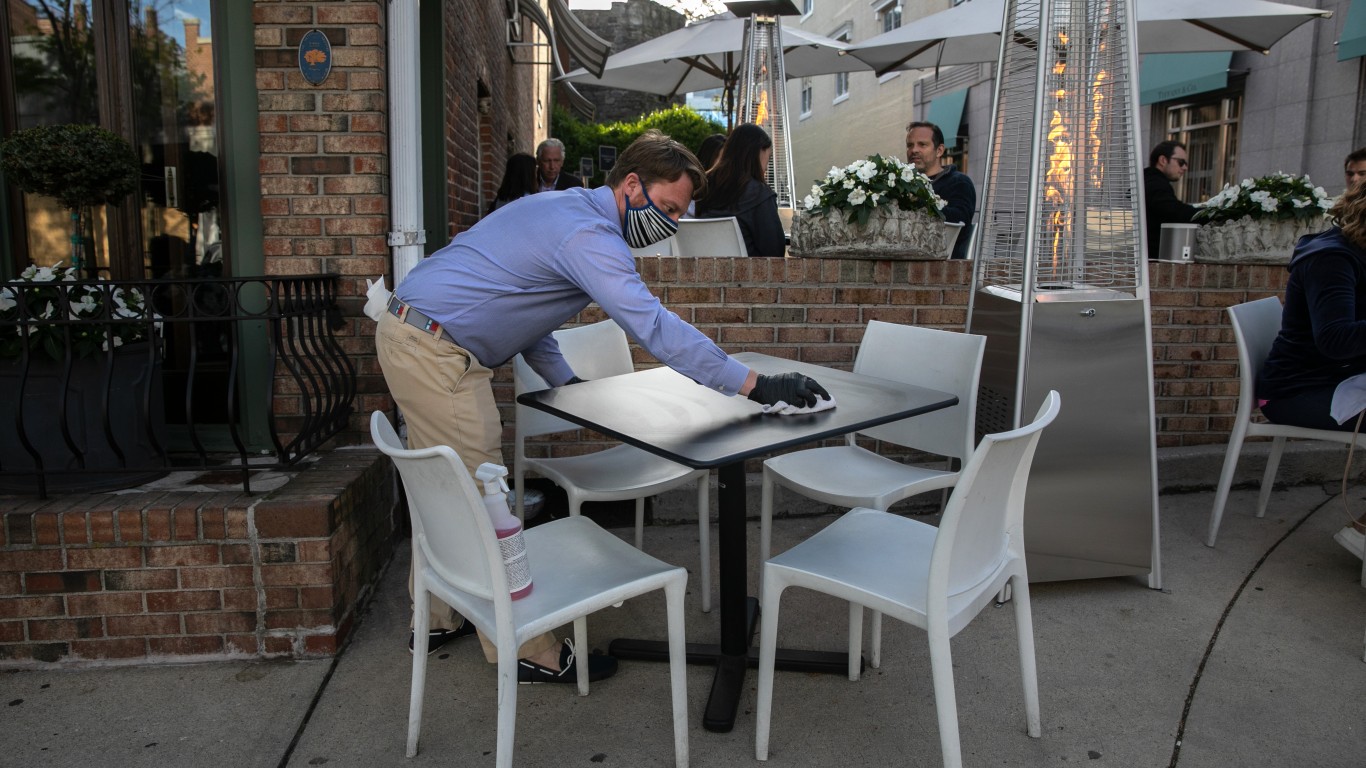
Connecticut
> Mask mandate Yes
> Indoor seating capacity: 50%
> Maximum guests per table: 8
Connecticut was in Phase 3 of its reopening, with restaurants operating at 75% capacity for indoor dining until early November, when Gov. Ned Lamont rolled the state back to what he calls Phase 2.1. This new phase lowers capacity at restaurants to 50% and sets a new restriction of maximum number of diners per table. Connecticut also asks that restaurants consider establishing separate entrances and exits so that one-way foot traffic is possible. Nonessential amenities like playgrounds, dance floors, and pool tables must be closed or removed.

Delaware
> Mask mandate Yes
> Indoor seating capacity: 30%
> Maximum guests per table: 4 adults, 6 diner total
According to the latest revision of Delaware’s state of emergency declaration, issued on Nov. 20, restaurants are required to close for indoor or outdoor dining at 10 p.m. nightly (takeout may continue beyond that time). Also, according to the revision, establishments “must place a sign on each table stating that only customers from the same household may share a table.” Restaurants are required to give diners the option to leave their information on file in case any staff members or other customers test positive, but staff is not required to deny service to those who don’t provide their details.
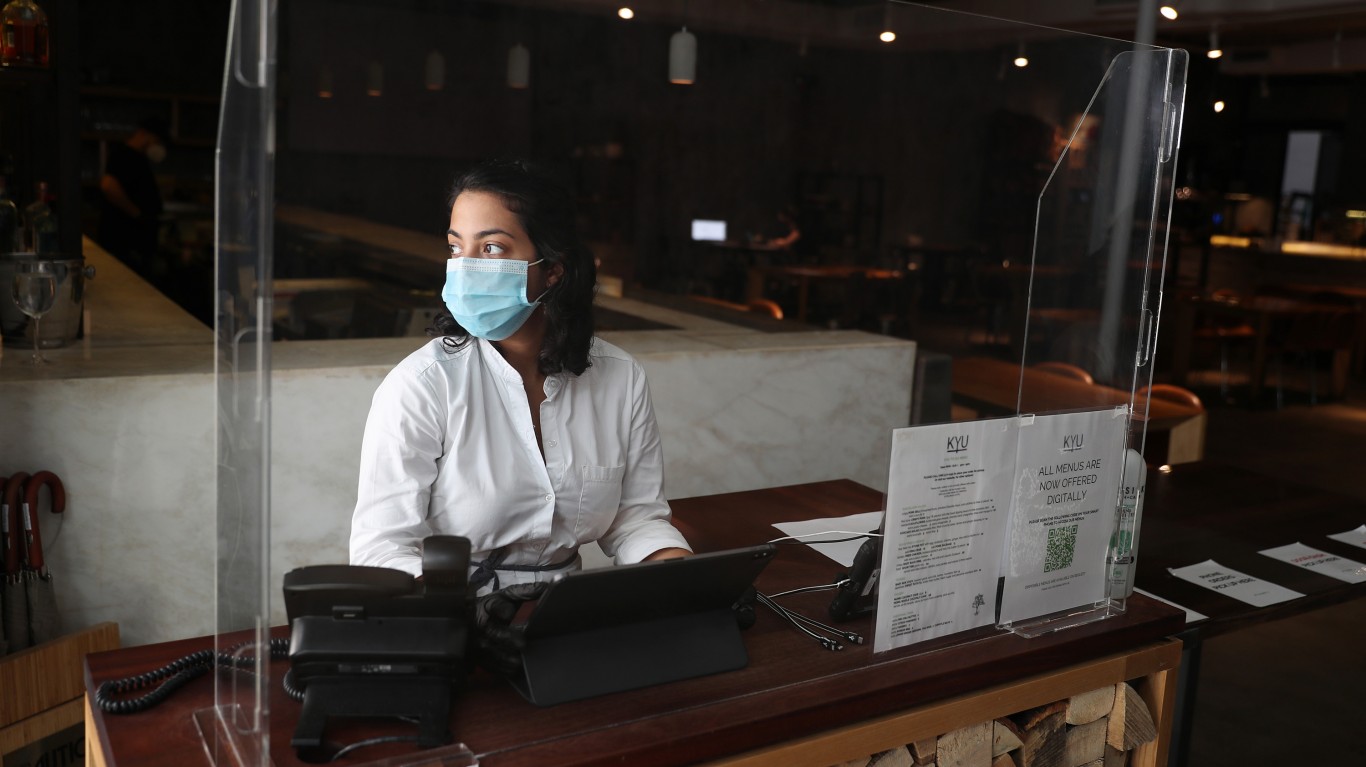
Florida
> Mask mandate No (required in some municipalities, but violations not enforced)
> Indoor seating capacity: 50-100%
> Maximum guests per table: 10
According to an executive order issued by Gov. Ron DeSantis on Sept. 25, if a restaurant chooses to limit capacity to less than 100%, it must quantify the economic impact of the limitation and explain why it is necessary for public health — and in no case may capacity be set at less than 50%. The order also forbids the collection of fines or penalties “associated with COVID-19 enforced upon individuals.” In November, DeSantis extended the September order.
[in-text-ad-2]
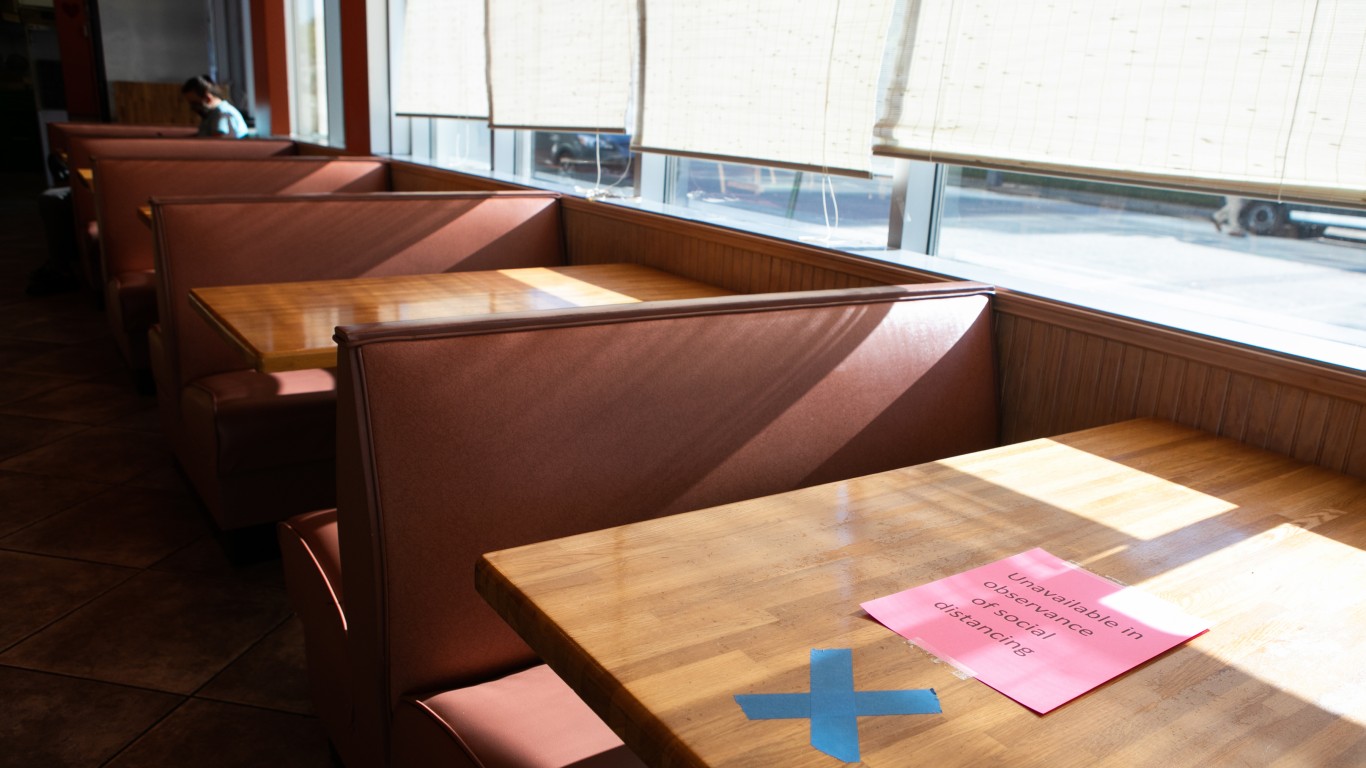
Georgia
> Mask mandate No (required in some municipalities)
> Indoor seating capacity: 100% (with some restrictions)
> Maximum guests per table: Not specified
Georgia was one of the first states to reopen businesses after the advent of the pandemic. Initially, Gov. Brian Kemp wanted to outlaw local mask mandates, but in August, he issued an executive order permitting them under circumstances relating to the number of COVID-19 cases. Atlanta and neighboring Decatur are among the cities where masks are required, though restaurateurs have the option of ignoring the mandate. Though according to the official state website, “All Georgia residents and visitors are strongly encouraged to wear face coverings while outside their home or place of residence, except when eating, drinking, or exercising outdoors.”
Hawaii
> Mask mandate Yes
> Indoor seating capacity: 50%
> Maximum guests per table: 5
Reopening guidelines from the Hawaii State Department of Health ask restaurants to “Consider a reservations-only business model for greater control of customer volume” for both indoor and outdoor seating and to “Consider allowing customers to pre-order while making reservations to decrease the length of time they are in the establishment.” Tables must be positioned at least 5 feet apart, and reservations are required for indoor dining.
[in-text-ad]

Idaho
> Mask mandate No (required in some municipalities)
> Indoor seating capacity: Not specified
> Maximum guests per table: Not specified
Idaho asks restaurants to “limit occupancy as necessary to maintain six feet physical distancing,” but leaves specific capacity limits up to individual operators. The state encourages restaurants to offer online, digital, and/or phone-in ordering and to implement explanatory signage and protection barriers to limit customer movement and establish distancing. In addition, Idaho requests — but doesn’t demand — that restaurants establish dedicated hours of operation for diners at risk of severe disease.
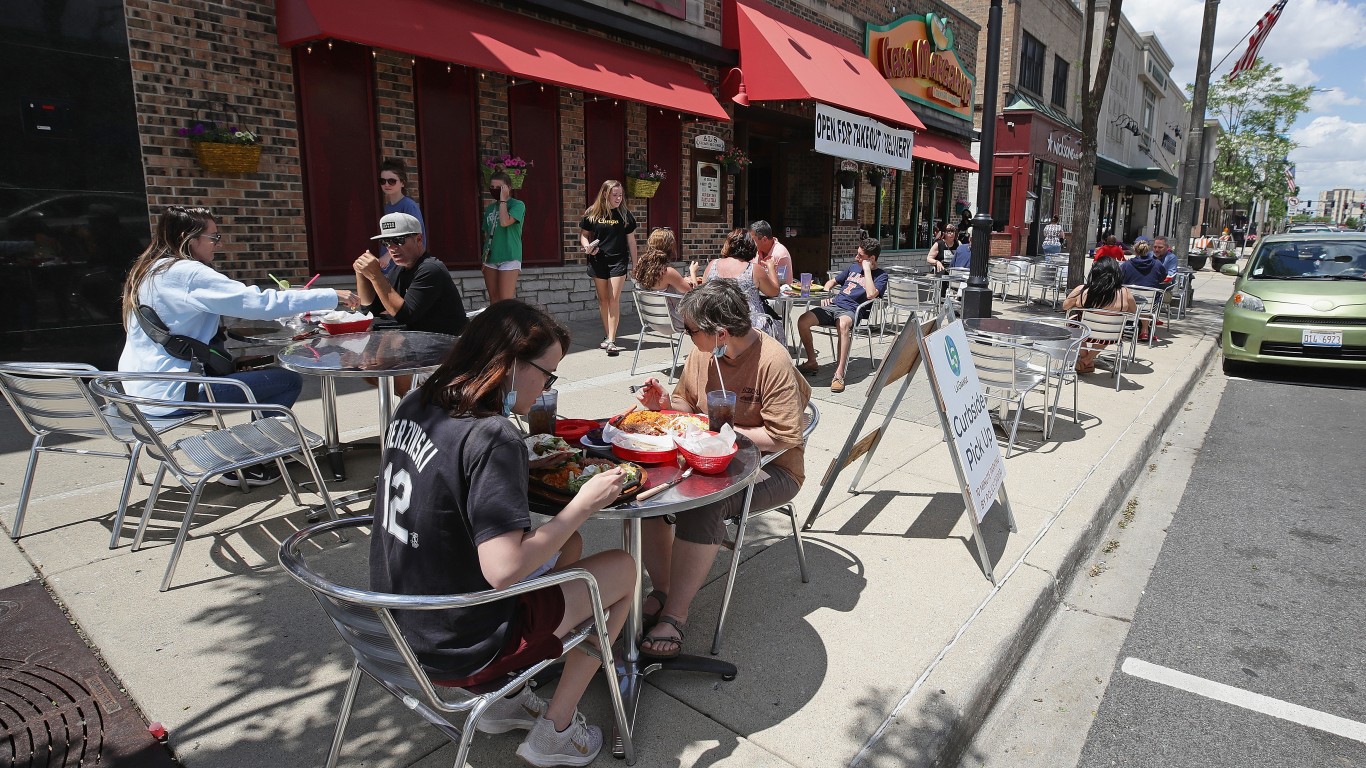
Illinois
> Mask mandate Yes
> Indoor seating capacity: Not specified
> Maximum guests per table: 10
Illinois divides the state into four regions, with reopening phases for each keyed to COVID-19 test positivity rate, ICU bed availability, and other metrics. All four are currently in Phase 4, the least restrictive level. Official guidelines specify that “seated area capacity of restaurants and bars should be determined by arranging seating to provide a minimum of six feet between tables or other designated patron service areas.” Unlike many states, Illinois permits live music in restaurants but asks that performers as well as employees follow social distancing guidelines and that performers wear masks where practical. In addition, the placement of barriers between singers and both customers and employees is encouraged.
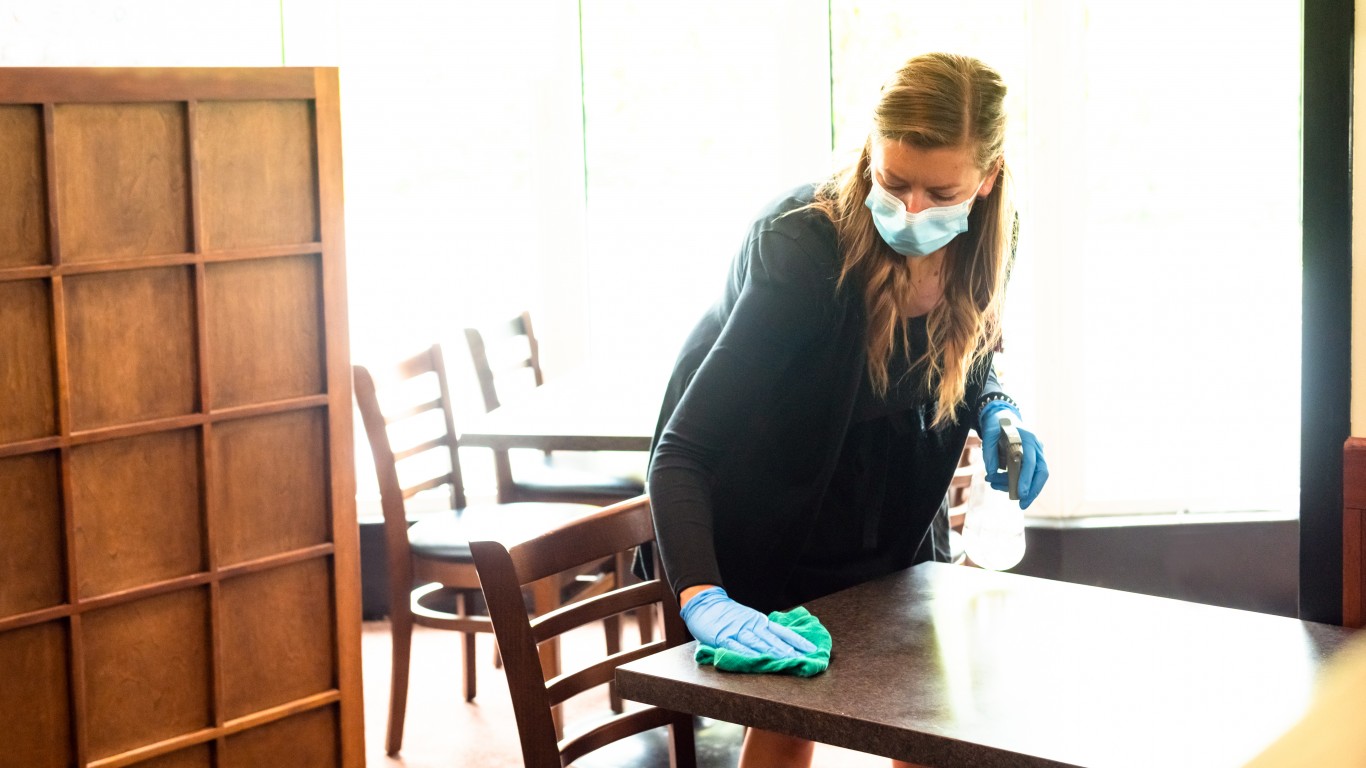
Indiana
> Mask mandate Yes
> Indoor seating capacity: Not specified
> Maximum guests per table: 6
In November, Gov. Eric Holcomb introduced a new four-level color-coded rating system for counties, replacing the tiered phases the state had been using. Among other things, the system limits public gatherings to 25 people in counties in the red level (the most restrictive level). However, Holcomb also issued an executive order on Dec. 1 rescinding capacity limits for restaurants, bars, and other places where food and/or drink is served. Instead, the state now requires only that “seating must be arranged and maintained so that individuals, households or parties are spaced at least six feet apart from any other individual, household or party.”
[in-text-ad-2]
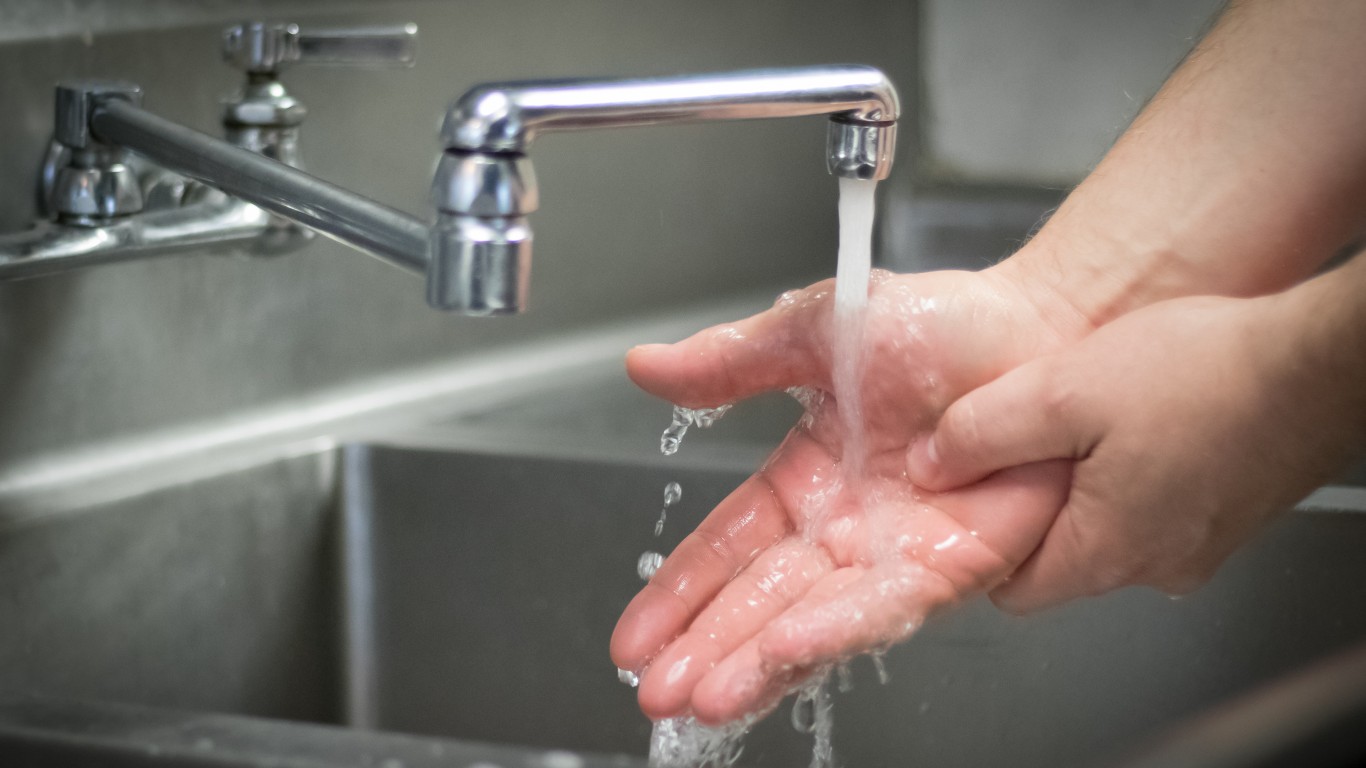
Iowa
> Mask mandate Yes
> Indoor seating capacity: 100%
> Maximum guests per table: 8 (unlimited if the entire group is from the same household)
After initially leaving it up to individual restaurant operators to establish and police their own mitigation protocols, Gov. Kim Reynolds announced a statewide mask-wearing mandate on Nov. 17. The mandate was originally set to expire on Dec. 10 but has been extended until at least Jan. 8. In addition to requiring a distance of at least 6 feet between each group or lone diners, the state asks restaurants to provide distinct walking lanes to minimize contact between customers where possible.

Kansas
> Mask mandate Yes, with exceptions
> Indoor seating capacity: 100% (with some restrictions)
> Maximum guests per table: 10 (with exceptions)
Gov. Laura Kelly issued an executive order in July, reissued in November, requiring anyone over 5 years old to wear masks both indoors and outdoors if maintaining a 6-foot distance from others not of the same household is impossible. However, state law permits counties to ignore the mandate if they wish. Counties also have leeway to establish other standards. For instance, Shawnee County (home to Topeka, the state capital) limits restaurant seating to eight people per table and allows law enforcement to issue code-violation citations, unlike many other jurisdictions.
[in-text-ad]
Kentucky
> Mask mandate Yes
> Indoor seating capacity: 50%
> Maximum guests per table: 10
The Bluegrass State requires masks for anyone over the age of 5 “in situations that represent a high risk of COVID-19 transmission” — restaurants included. The mandate is in effect at least until Jan. 2. While up to 10 customers may dine together, this doesn’t seem to allow meals shared with friends, as official guidelines decree that “Persons not living within the same household should not be permitted to sit at the same table.”

Louisiana
> Mask mandate Yes
> Indoor seating capacity: 50%
> Maximum guests per table: 10
The state’s mask requirement applies to those 8 years old or older, though the mandate encourages face coverings for those aged 2 to 7 as well. Restaurants are required to assign crowd managers “to call for emergency evacuation, enforce the maximum capacity and social distancing requirements, assign seating, and further manage any movement of people at all times that the building is occupied.” These functions may be assumed by management or staff members who have been properly trained. There must be one crowd manager for every 50 person in the restaurant.
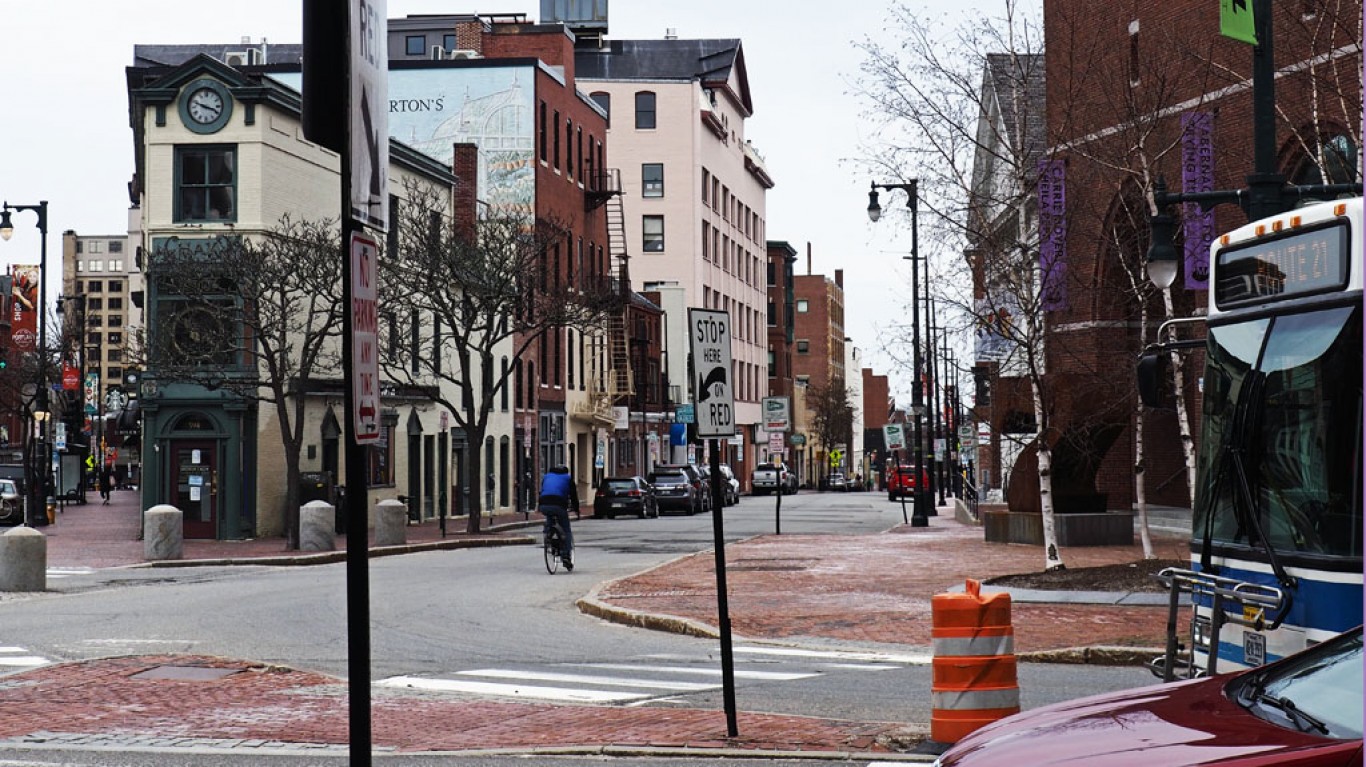
Maine
> Mask mandate Yes
> Indoor seating capacity: 100% (with some restrictions)
> Maximum guests per table: 8
Maine’s mask requirements became stricter since Gov. Janet Mills’ Nov. 4 executive order on the matter. The order requires face coverings for anyone over the age of 3 in all indoor and outdoor public spaces “regardless of the ability to maintain physical distancing.” Previously, not all public spaces were covered by the mandate, and the requirement did not apply when distancing was possible. A subsequent order, on Dec. 11, specifically directed restaurateurs and operators of other indoor facilities to enforce the new rules. In addition, an executive order issued on Nov. 19 called for all restaurants, bars, and other public amusement and food and drink venues to close nightly by 9 p.m. On Dec. 4, this order was extended through at least Jan. 3.
[in-text-ad-2]
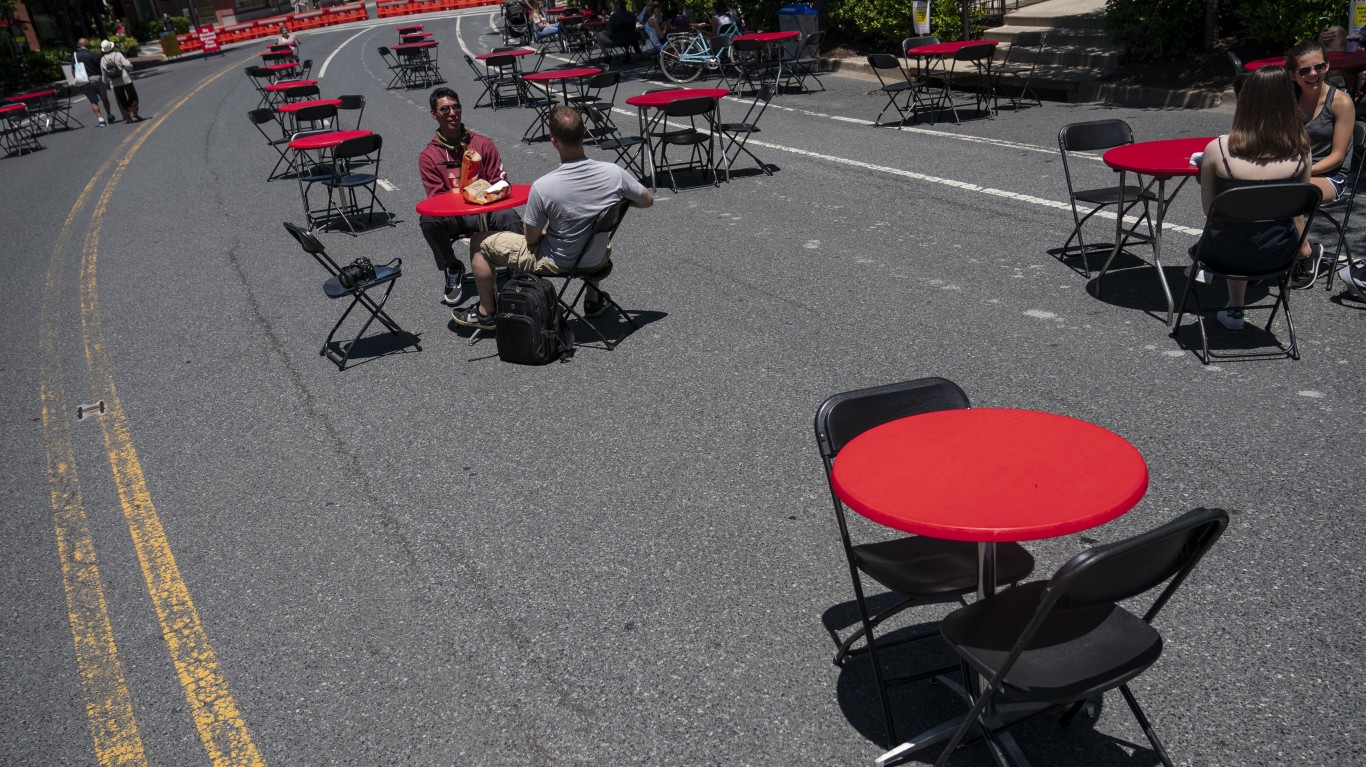
Maryland
> Mask mandate Yes
> Indoor seating capacity: 50%
> Maximum guests per table: 6
Gov. Larry Hogan’s original mask mandate, issued on April 18, applied to those 9 years and older, but effective July 31, the age limit was dropped to 5. Rules issued Nov. 20 require all food service establishments to stop accepting new patrons or taking food or drink orders for sit-down dining after 10 p.m. (takeout and delivery may continue). While some states permit restaurants to contact diners waiting for tables by pager, Maryland guidelines state that this should be avoided. Instead, they should use phone apps, texting, or signs to inform customers when their tables or takeout orders are ready.
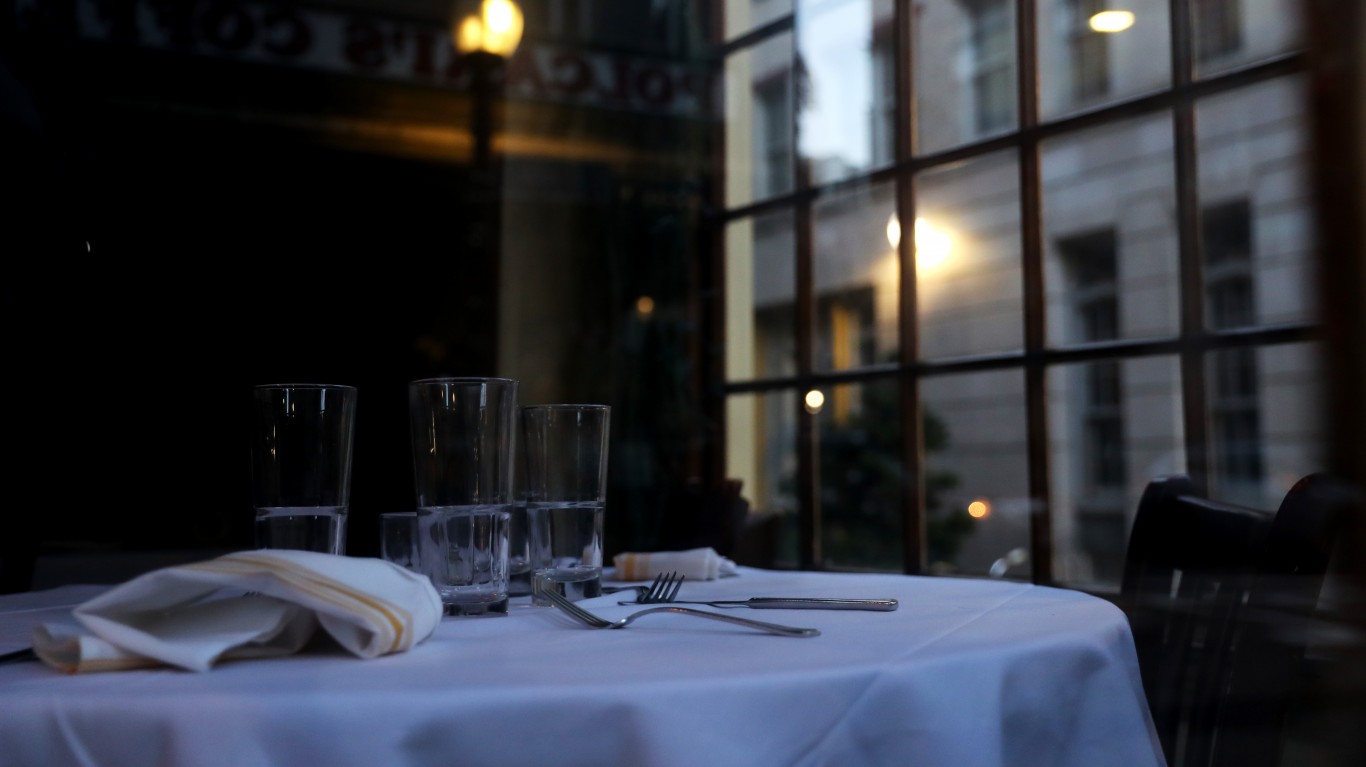
Massachusetts
> Mask mandate Yes
> Indoor seating capacity: 25%
> Maximum guests per table: 10
Due to a spike in coronavirus cases in the state, Gov. Charlie Baker issued an order on Dec. 26 drastically reducing allowable seating capacity from 100% to 25%, both indoors and outdoors. An earlier order, issued on Nov. 6, mandated face coverings in public spaces, indoors or outdoors, for anyone over the age of 5, even when maintaining a 6-foot distance is possible. The same order requires restaurants to close their premises to the public at 9:30 p.m. nightly. The state also sets a time limit of 90 minutes for the consumption of meals.
[in-text-ad]

Michigan
> Mask mandate Yes
> Indoor seating capacity: No indoor dining
> Maximum guests per table: Not applicable
On Oct. 2, the Michigan Supreme Court invalidated most of the executive orders regarding the COVID-19 crisis that Gov. Gretchen Whitmer issued after April 30, holding that such mandates require legislative approval. Mask orders were among the initiatives affected. Following the court decision, state and local health authorities began issuing their own mandates regarding masks and social distancing protocols, and face coverings are now required for those 5 years and older in most public spaces. Faced with a surge in coronavirus cases this fall, the state temporarily banned all indoor dining as of Nov. 18.
Minnesota
> Mask mandate Yes
> Indoor seating capacity: No indoor dining
> Maximum guests per table: Not applicable
On Dec. 16, Minnesota’s Gov. Tim Walz modified an earlier executive order, temporarily banning all indoor food and drink service in restaurants, bars, and other venues. Unlike in most other states, the terms of the new order also set a maximum for outdoor dining — four diners per table in this case. As an acknowledgement of the state’s wintertime climate, the order also states that “In the event of inclement weather, customers may move indoors to package food and pay bills, but must exit quickly.” The order adds, “Nothing in this Executive Order prohibits indoor sheltering in the event of severe weather.”

Mississippi
> Mask mandate Yes (with exceptions)
> Indoor seating capacity: 75%
> Maximum guests per table: 10
Gov. Tate Reeves on Sept. 30 revoked a previously imposed statewide mask mandate, but on Oct. 19 he issued a new order requiring the wearing of masks in indoor public spaces in counties with high coronavirus case rates. As of late December, all but four of the state’s 82 counties had a mask requirement in effect until at least Jan. 15. The state encourages, but does not mandate, the use of technology, such as mobile reservation and ordering systems and contactless payment, to avoid as much in-person contact as possible.
[in-text-ad-2]

Missouri
> Mask mandate No (required in some municipalities)
> Indoor seating capacity: 100% (with some restrictions)
> Maximum guests per table: 10
While Gov. Mike Parson (who himself tested positive for the coronavirus in September) has made it clear that he has no intentions of instituting a statewide mask mandate, local municipalities have the option to establish their own mandates. The state’s two most populous cities, Kansas City and St. Louis, among others, have issued such mandates. Though the state’s guidelines for restaurants are less detailed than those issued by most other states, the Missouri Department of Health and Senior Services includes the advisory that “Operators need to be flexible about canceling or rescheduling reservations and events.”
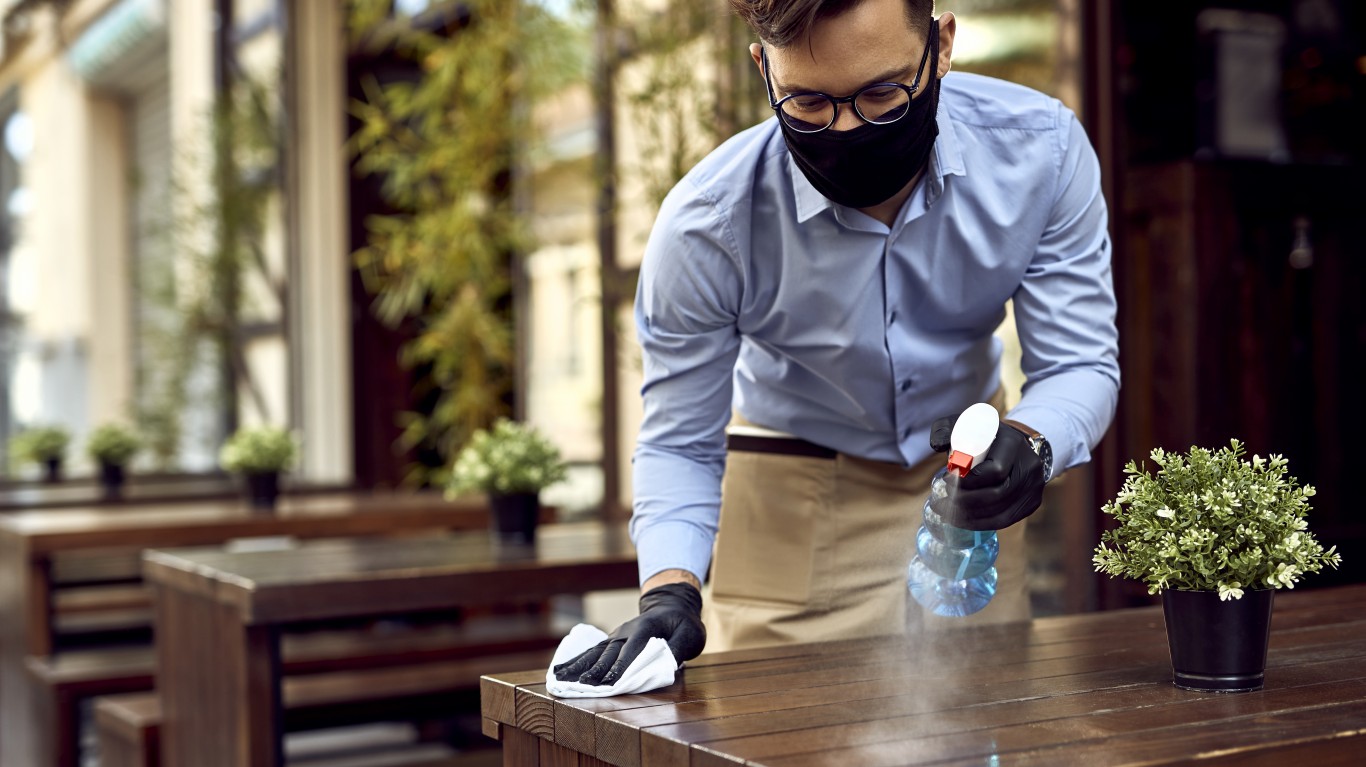
Montana
> Mask mandate Yes
> Indoor seating capacity: 50%
> Maximum guests per table: 6
Gov. Steve Bullock’s initial mask mandate didn’t apply to counties with fewer than four active confirmed cases of COVID-19, but a new order, issued on Nov. 17, expanded the requirement to the entire state. While most restaurants are open for limited indoor service, Montana rules stipulate that “In-house dining for quick service restaurants should remain closed, if all guidelines can’t be met, including the cleaning of every table between customers.”
[in-text-ad]
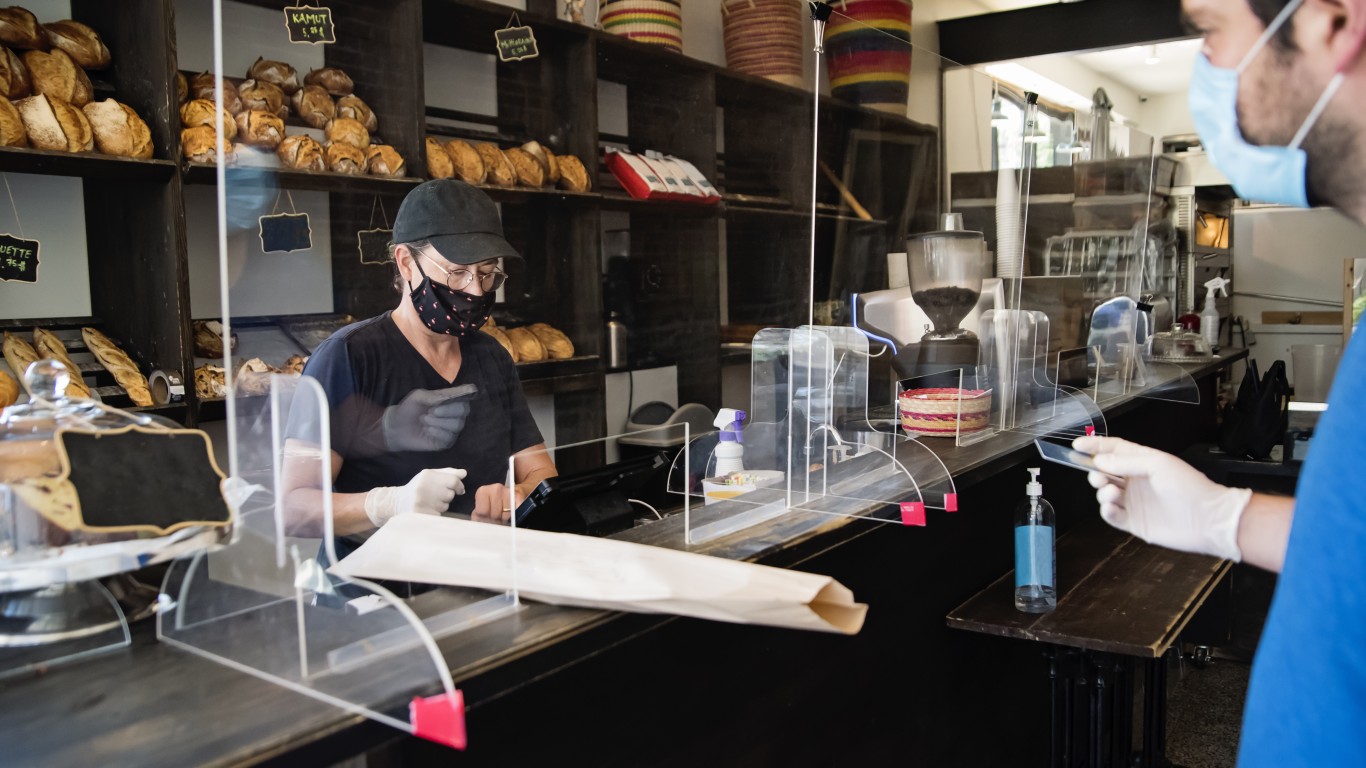
Nebraska
> Mask mandate No
> Indoor seating capacity: 100% (with some restrictions)
> Maximum guests per table: 8
While masks are recommended for restaurant staff and for people in public spaces, they are not required. Face coverings are mandated only in places where close contact for 15 minutes or more is required, which includes barber shops, massage parlors, bowling alleys, and other businesses, but not food service establishments. Some municipalities have enacted or are considering enacting mask orders of their own, but Gov. Pete Ricketts has indicated that they may not have the authority to do so.
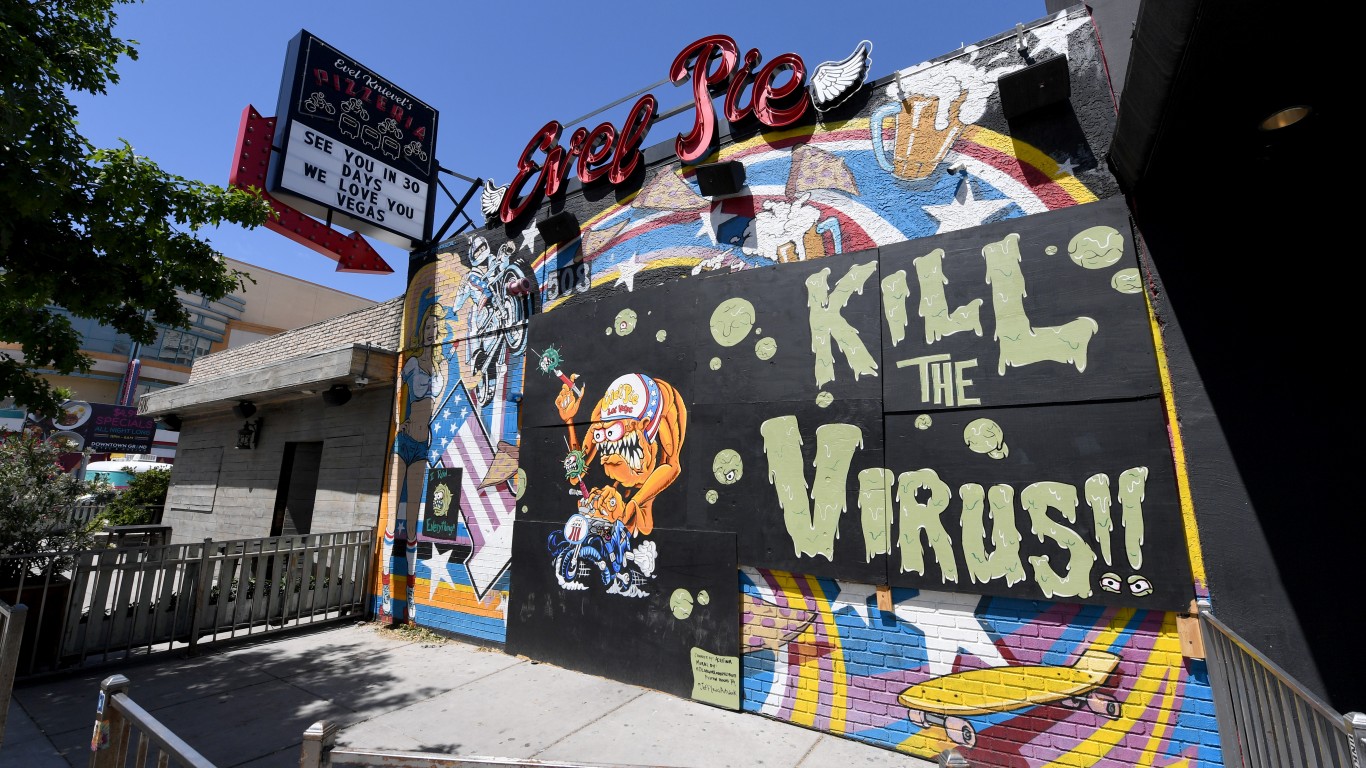
Nevada
> Mask mandate Yes
> Indoor seating capacity: 25%
> Maximum guests per table: 6
On Nov. 22, Gov. Steve Sisolak introduced new measures aimed at slowing the rise of coronavirus cases in the state. Among these measures was the rolling back of indoor restaurant capacity from 50% to 25% and requiring that diners make reservations in order to be seated. An order issued on June 24 and still in force requires face coverings “in any public place” for anyone over 9 years of age. Nevada also asks that establishments post signage throughout the restaurant about the proper use of face coverings and rules for social distancing, specifying that the latter should be in multiple languages.

New Hampshire
> Mask mandate Yes
> Indoor seating capacity: 50-100%
> Maximum guests per table: 10 (maximum of 6 adults)
Replacing a series of targeted mask mandates, Gov. Chris Sununu issued an order taking effect on Nov. 20 requiring all persons over the age of 5 to “wear a mask or cloth face covering over their noses and mouths any time they are in public spaces, indoors or outdoors, where they are unable to or do not consistently maintain a physical distance of at least six feet from persons outside their own households.” Though as a general statewide rule restaurants are allowed to operate at 100% capacity for indoor dining, seating in four counties is limited to 50%, and in six others, “seated dining areas are limited in capacity to the number of people/tables where table spacing is able to be maintained.”
[in-text-ad-2]

New Jersey
> Mask mandate Yes
> Indoor seating capacity: 25%
> Maximum guests per table: 8 (unlimited for members of the same family or from the same household)
An executive order issued by Gov. Phil Murphy on July 8, which mandated masks for anyone over the age of 2 in both indoor and outdoor public spaces, remains in force. While indoor dining is limited to 25% of capacity, guidelines on the New Jersey COVID-19 Information Hub, as updated on Sept. 29, state that “Areas with a fixed roof, if two sides are open, comprising over 50% of their total wall space, may operate under rules for outdoor dining.” That means that there’s no capacity limit for such spaces, as long as social distancing, masking, and other safety measures are observed.
New Mexico
> Mask mandate Yes
> Indoor seating capacity: No indoor dining
> Maximum guests per table: Not applicable
Regulations that went into effect on Oct. 30 required that all establishments serving food and/or drink in New Mexico complete the state’s Safe Certified training program and retain contact tracing records on all customers for at least 21 days. These became moot on Nov. 18, when Billy Jimenez, acting cabinet secretary for the New Mexico Department of Health, issued an executive order temporarily banning all indoor and outdoor service, allowing only takeout and delivery to continue. The order further advised that “New Mexico citizens should stay at home and undertake only those outings absolutely necessary for their health, safety, or welfare.”
[in-text-ad]
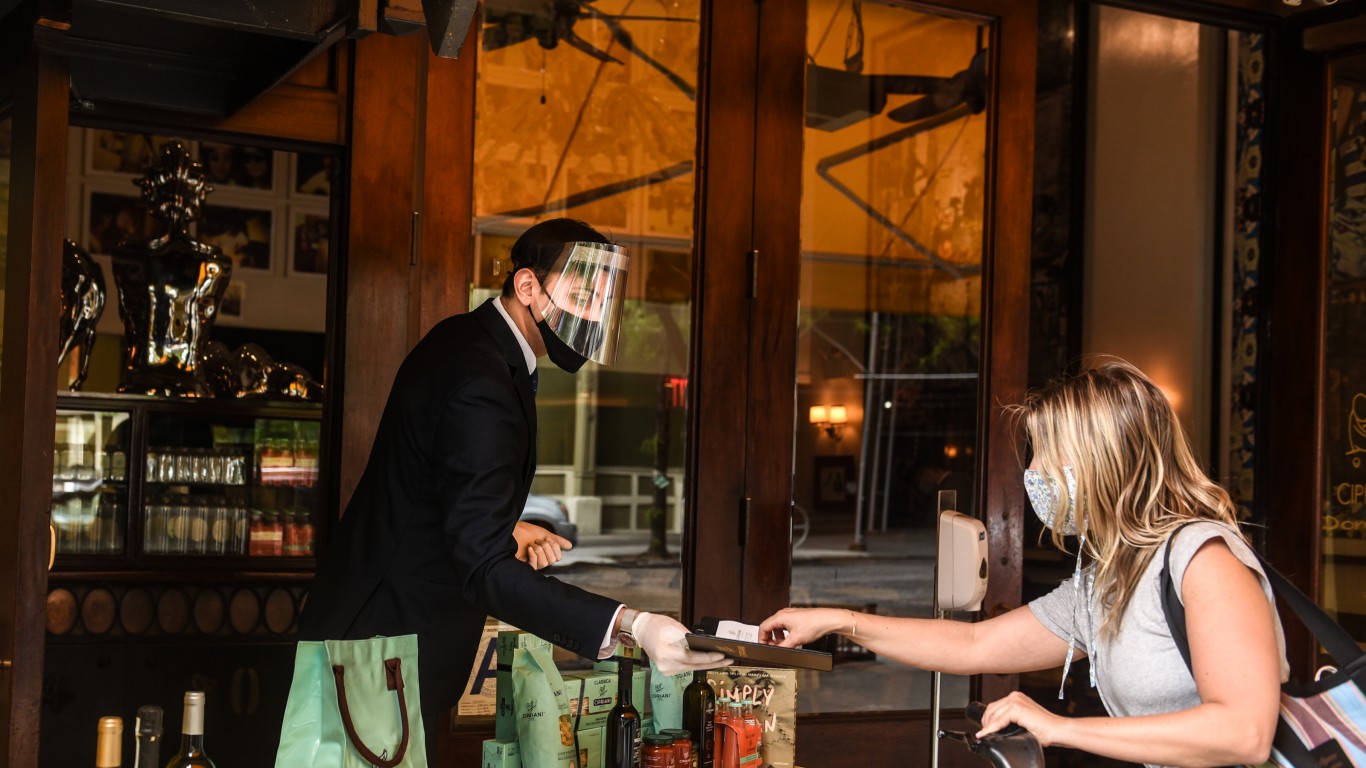
New York
> Mask mandate Yes
> Indoor seating capacity: 50% (no indoor dining in New York City)
> Maximum guests per table: 4
On Dec. 10, Gov. Andrew Cuomo announced a new system of color-coded micro-cluster focus zones — yellow, orange, and red (red being the most restrictive) — for areas of the state based on positivity rates and other measures. Restaurants in yellow zones may provide both indoor and outdoor dining. Orange-zone establishments are limited to outdoor dining, takeout, and delivery. In red zones, only takeout and delivery are allowed. While indoor dining has been suspended in New York City, outdoor dining is still allowed. In other parts of the state, according to the Cluster Action Initiative, indoor dining is under review, but there are currently no restrictions. The state’s mask mandate, applying to anyone over the age of 2 who can “medically tolerate a face covering,” has been in place since April 17.
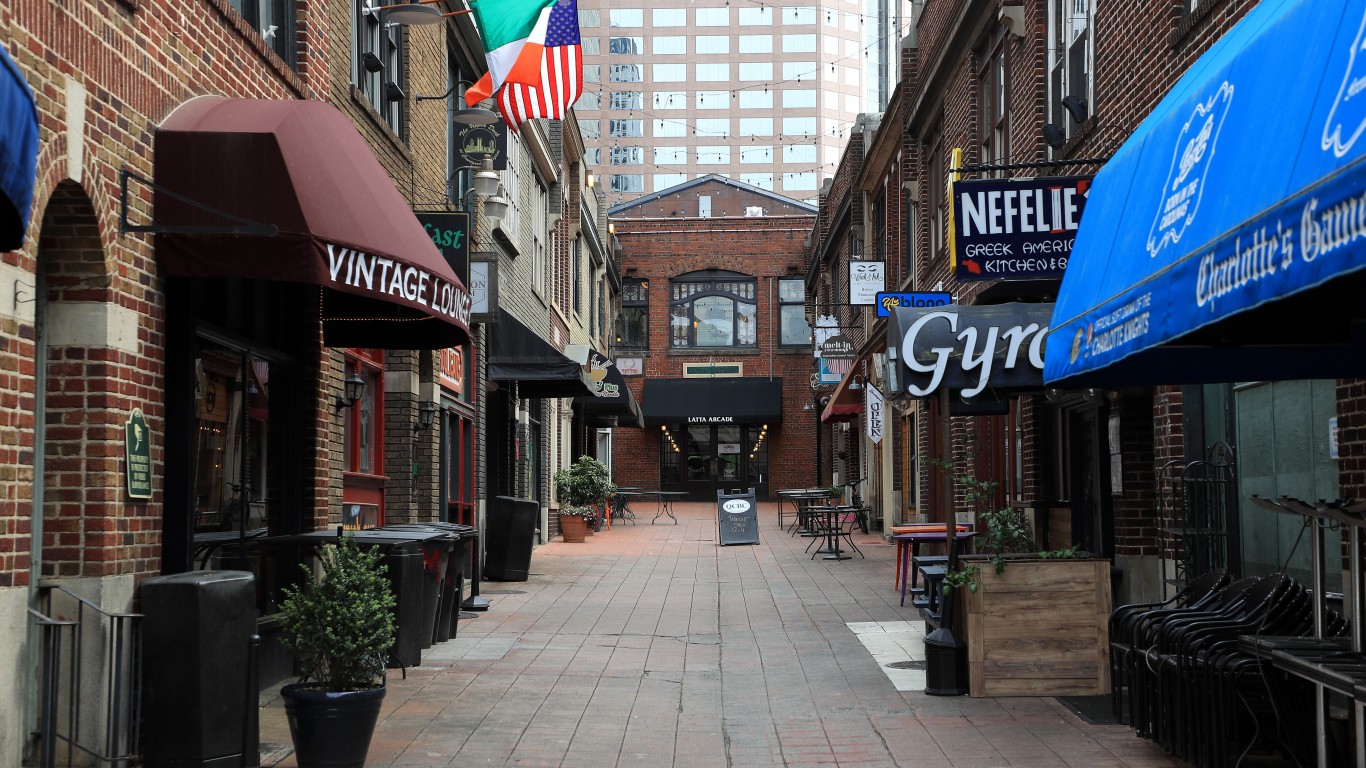
North Carolina
> Mask mandate Yes
> Indoor seating capacity: 50%
> Maximum guests per table: 10 (unlimited for members of the same household)
An executive order issued by Gov. Roy Cooper on Dec. 8 stressed that the 50% indoor occupancy limit is contingent on there being sufficient room in the interior to maintain a distance of 6 feet between groups. In spaces without a stated fire capacity (on which occupancy limits are based), the order says there can be no more than 12 guests for every 1,000 square feet of space. A limited mask mandate had been in effect since June, but a Nov. 23 order expanded it, requiring everyone over the age of 5 to wear a face covering indoors any time someone from another household is in the room, even if distancing is possible, and also outdoors if maintaining a 6-foot distance from others is impossible.
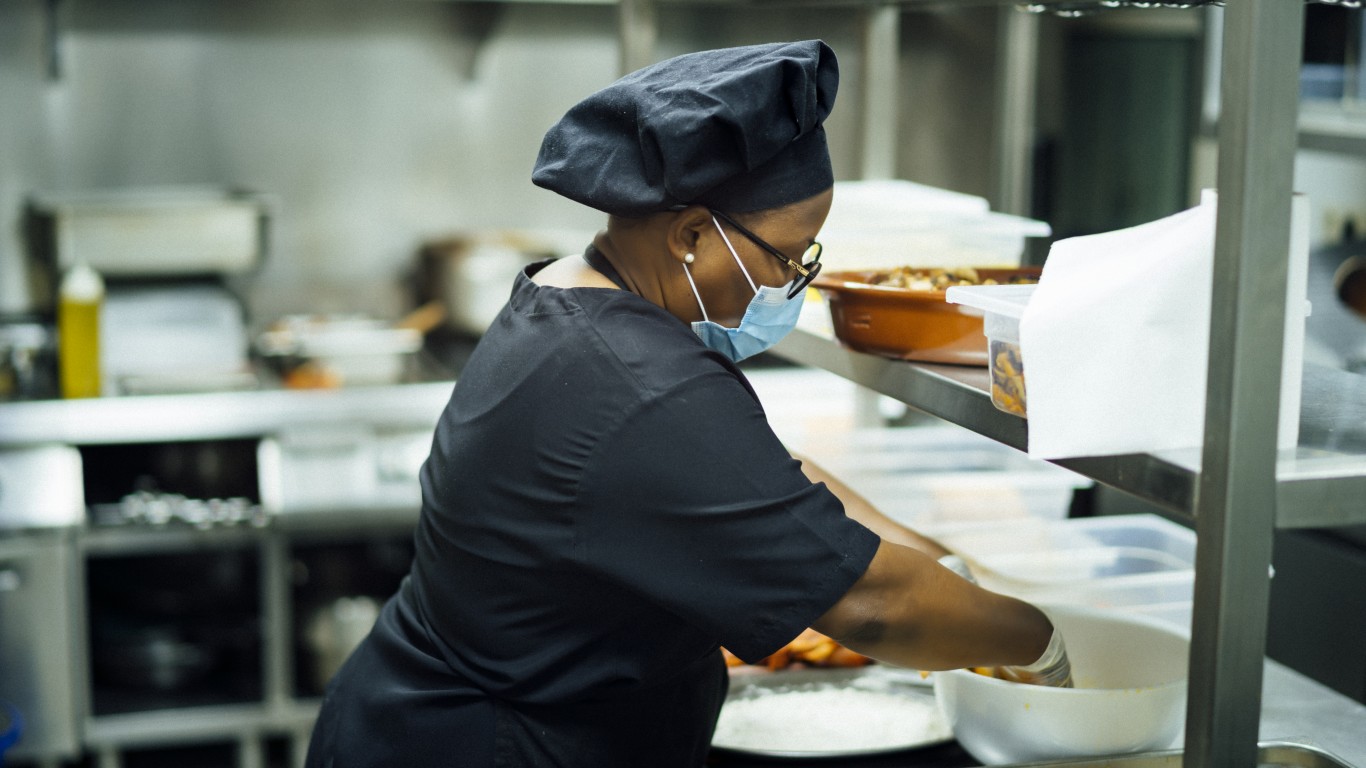
North Dakota
> Mask mandate Yes
> Indoor seating capacity: 50%-100% (with some restrictions) (depending on local risk level)
> Maximum guests per table: 10
For months, North Dakota Gov. Doug Burgum resisted issuing a mask mandate and other anti-COVID-19 protocols. In late October, Dr. Deborah Birx visited the state in her capacity as White House coronavirus response coordinator and described measures being taken around Bismarck, the state capital, as the worst she had seen in a tour of almost 40 states. On Nov. 13, Burgum reversed course, ordering everyone over the age of 5 to wear face coverings in all indoor public spaces and in outdoor situations where distancing isn’t possible. He also ordered restaurants and bars to close for service at 10 p.m., but on Dec. 21, citing a decrease in active coronavirus cases and hospitalizations, he removed this restriction. The state’s 50% seating capacity limit is set to expire on Jan. 8.
[in-text-ad-2]
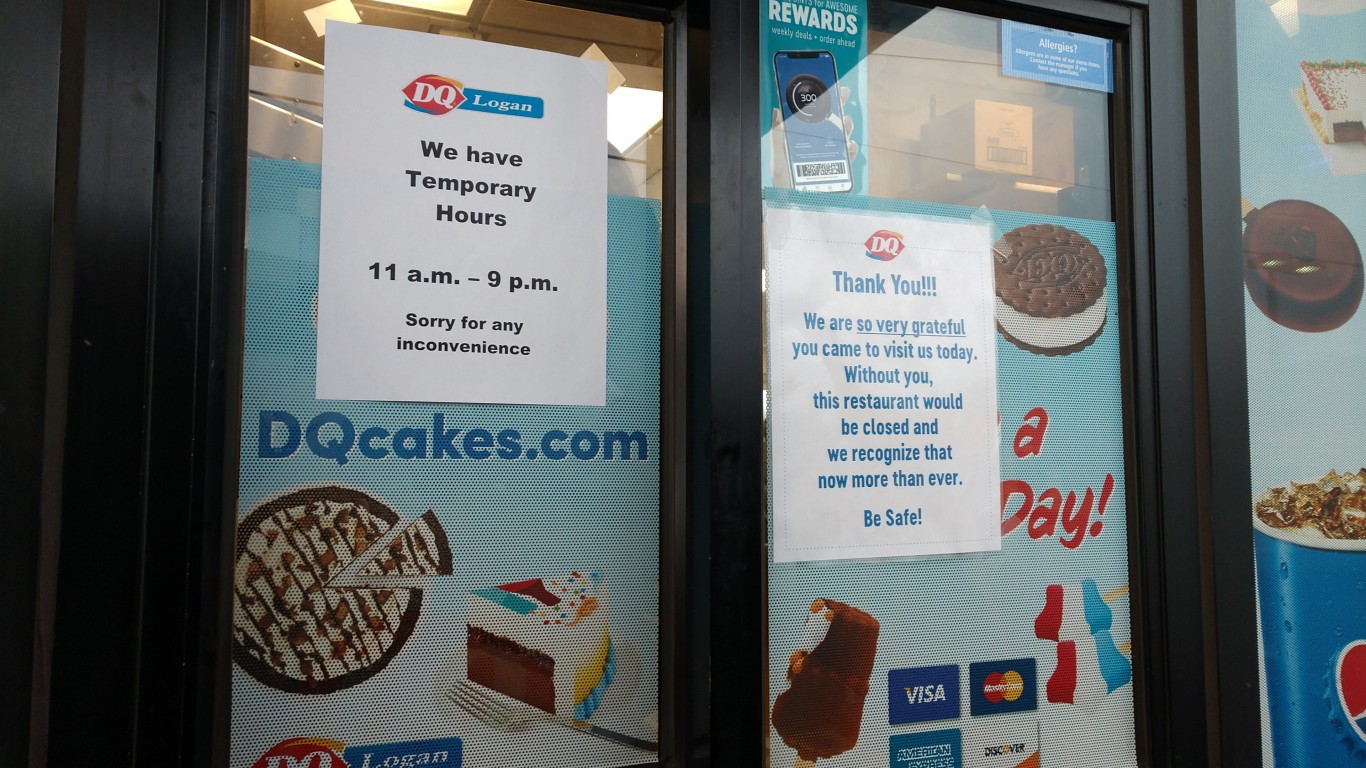
Ohio
> Mask mandate Yes
> Indoor seating capacity: Not specified
> Maximum guests per table: 10
Ohio requires everyone 10 years of age or older to wear a face covering at any indoor location that isn’t a residence, as well as outdoors when it’s not possible to maintain a 6-foot distance from non-household members. Like some other states, Ohio has established a curfew for alcohol sales and consumption, cutting off sales nightly at 10 p.m. and requiring patrons to finish their drinks by 11 p.m. New guidelines, however, have expanded the number of drinks that may be sold with each meal ordered to-go from two to three. The state has never issued capacity limits by percentage.

Oklahoma
> Mask mandate No (required in some municipalities)
> Indoor seating capacity: Not specified
> Maximum guests per table: Not specified
Despite the fact that he recovered from COVID-19 himself this summer, Gov. Kevin Stitt has resisted issuing a statewide mask mandate, though he has asked state residents to wear face coverings. (Some cities, including Tulsa, have mandates of their own.) Effective Nov. 19, Stitt imposed an 11 p.m. curfew on bars and restaurants but declined to consider limiting capacity. Interestingly, Oklahoma is the only state that asks restaurants to limit the use of high-risk staff members, meaning those who are immunocompromised or over the age of 65. Guidelines also instruct operators to “Cross-train personnel to perform essential functions so that the workplace is able to operate even if key staff members are absent.”
[in-text-ad]
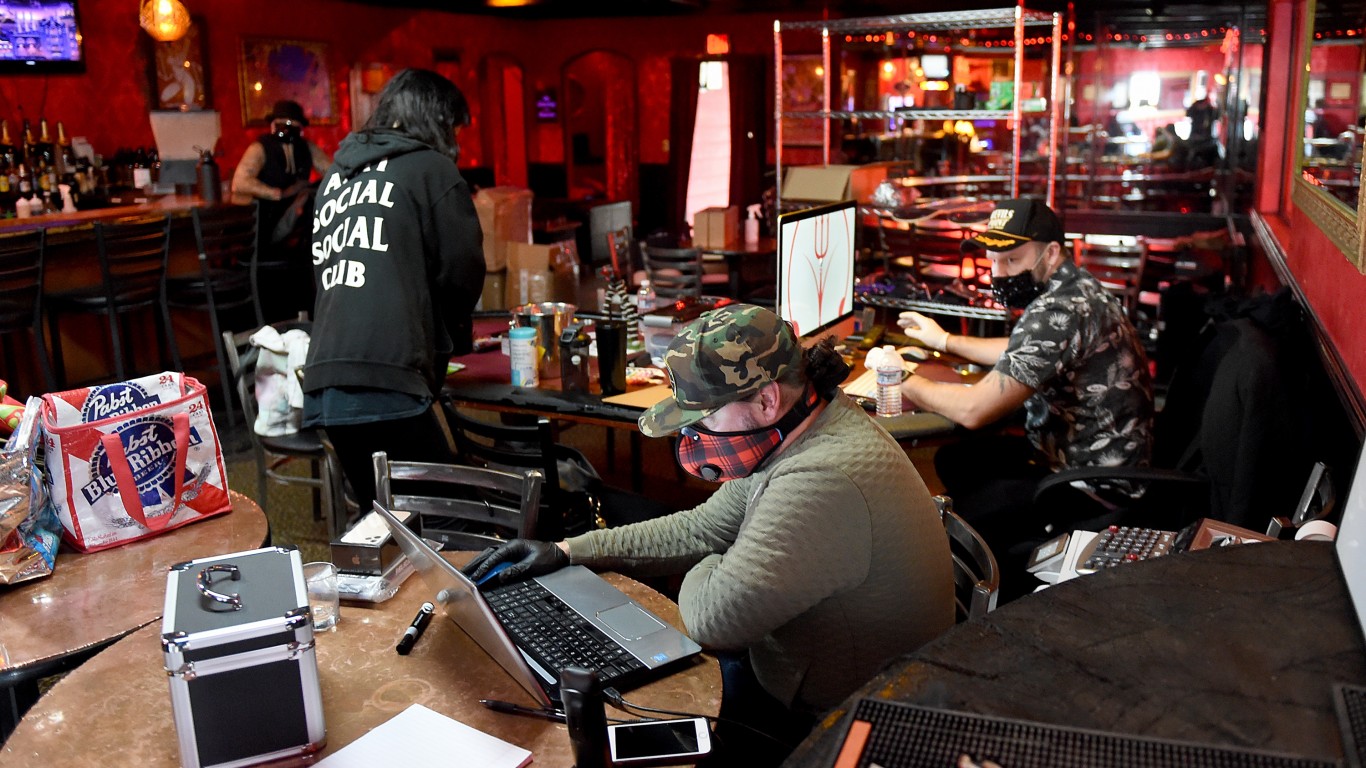
Oregon
> Mask mandate Yes
> Indoor seating capacity: 0-50%
> Maximum guests per table: 10
Gov. Kate Brown issued a temporary freeze order closing all restaurants for both indoor and outdoor service for a two-week period from Nov. 18 through Dec. 2. On Dec. 2, outdoor dining resumed, but indoor dining opened based on county-by-county risk level. Those at lowest risk may serve indoors to a capacity of 50%. Those at moderate risk are limited to 50% or 100 people total, whichever is less. High risk counties must limit occupancy to 25% or 50 people, whichever is less, and in those subject to extreme risk, no indoor dining is permitted. Masks are required, with some exceptions, for anyone 5 years of age or older.
Pennsylvania
> Mask mandate Yes
> Indoor seating capacity: No indoor dining
> Maximum guests per table: Not applicable
Adding restrictions to a mask order that had been in effect as of July 1, Pennsylvania’s health secretary, Rachel Levine, issued an order on Nov. 18 requiring face coverings for those “Indoors or in an enclosed space, where another person or persons who are not members of the individual’s household are present in the same space, irrespective of physical distance.” The order also requires masks outdoors when physical distancing is difficult. Gov. Tom Wolf subsequently issued a “limited-time mitigation” order, effective from Dec. 12 through Jan. 4, prohibiting all indoor dining.
Rhode Island
> Mask mandate Yes
> Indoor seating capacity: 50%
> Maximum guests per table: Unspecified as long as all are members of the same household
Masks have been mandatory in public spaces in the state since May 8 for anyone over the age of 2. Only members of the same household may be seated at indoor restaurant tables. Members of up to two households may sit together outside, as long as the total number of diners doesn’t exceed eight. The state imposed a curfew on bars and restaurants, effective Nov. 8, requiring them to close by 10 p.m. Sunday through Thursday and 10:30 p.m. Friday and Saturday.
[in-text-ad-2]
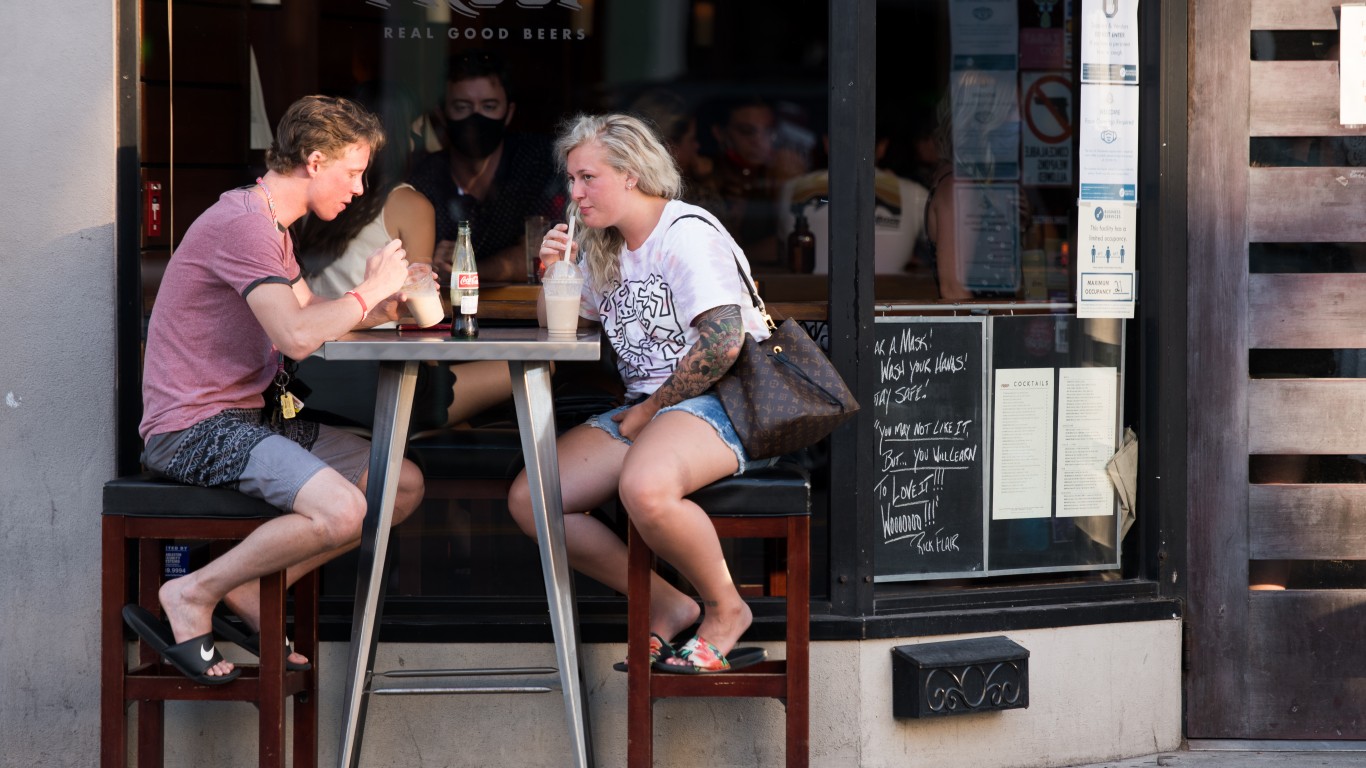
South Carolina
> Mask mandate No (required in some municipalities)
> Indoor seating capacity: 100% (with some restrictions)
> Maximum guests per table: 8
A statewide mask mandate would be unenforceable, according to Gov. Henry McMaster, but some nine counties and 55 municipalities (including Charleston and the capital city of Columbia) have instituted mandates of their own. The South Carolina Department of Parks, Recreation & Tourism has collaborated with the state’s Restaurant and Lodging Association to establish a voluntary program called Palmetto Priority. According to its website, “Restaurants that choose to participate in the program will complete a checklist of operational assurances as outlined in the restaurant reopening guidelines, participate in required free online education, and participate in a DHEC [Department of Health and Environmental Control] limited-scope food safety inspection.”

South Dakota
> Mask mandate No (required in some municipalities)
> Indoor seating capacity: 100%
> Maximum guests per table: Not specified
While the South Dakota Department of Health advises people to wear masks “in public settings where other social distancing measures are difficult to maintain,” Gov. Kristi Noem steadfastly refuses to institute a mask mandate or impose capacity limits on restaurants or other businesses. The state’s Back to Normal Plan stresses “the principle of personal responsibility,” but does note that “South Dakotans are encouraged to continue to consider CDC guidelines⦔
[in-text-ad]
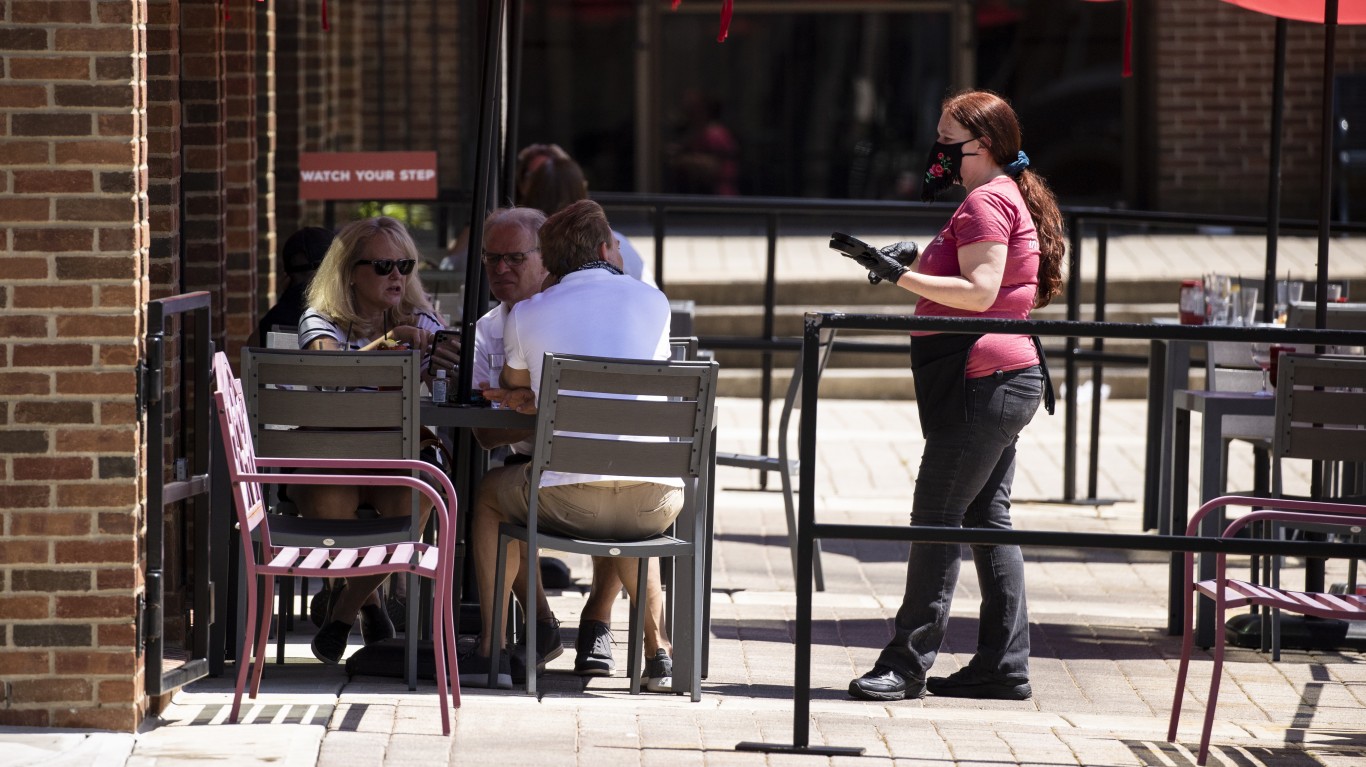
Tennessee
> Mask mandate No (required in some jurisdictions)
> Indoor seating capacity: 100% (with some restrictions)
> Maximum guests per table: 10
While Gov. Bill Lee urges Tennesseeans to wear masks in public places, he has not instituted an official mask mandate. However, the counties that include Memphis, Nashville, Knoxville, and Chattanooga, among other jurisdictions, have passed mandates of their own. The state’s restaurant guidelines suggest that establishments “Increase remote, curbside, pickup, and/or delivery options to minimize contact and maintain social distancing.” The same guidelines include a provision that may seem ironic for the capital city of Nashville — sometimes known as Music City, U.S.A. “Avoid offering live music unless appropriate precautions are taken,” it reads.

Texas
> Mask mandate Yes
> Indoor seating capacity: 50-75%
> Maximum guests per table: Not specified
Texas has mandated since July the wearing of face coverings in public spaces, including restaurants, “wherever it is not feasible to maintain six feet of social distancing from another person not in the same household.” Counties with fewer than 20 active COVID-19 cases may apply for an exemption from the requirement. Restaurants in most of the state are allowed to operate at 75% capacity, but that limit falls to 50% in regions where the percentage of hospital beds occupied by COVID-19 patients exceeds 15% for seven straight days.

Utah
> Mask mandate Yes
> Indoor seating capacity: 0-100%
> Maximum guests per table: 10
The state had previously imposed mask mandates on a county level based on coronavirus infection rates. On Nov. 9, however, Gov. Gary Herbert replaced this with a statewide measure requiring everyone over the age of 2 to wear a face covering in public places and whenever they are unable to maintain social distancing from others not in their household. The order will stay in place until Jan. 21. Utah divides regions of the state into four risk categories: new normal, low, moderate, and high. In high-risk areas, no indoor or outdoor dining is permitted. In low or moderate risk areas, there is no set capacity limit but physical distancing guidelines must be observed. A new normal risk level imposes no limits, but, as with low and moderate risk areas, requires stringent sanitation measures.
[in-text-ad-2]

Vermont
> Mask mandate Yes
> Indoor seating capacity: 50%
> Maximum guests per table: Not specified
Gov. Phil Scott issued a mask mandate effective Aug. 1, and there have been several subsequent extensions — the latest of which applies until at least Jan. 15. Its terms require everyone aged 2 and older to wear a face covering both indoors and out “wherever close contact is unavoidable.” Though an indoor seating capacity of 50% is allowed, regulations limit the overall number of diners to a maximum of 75 people indoors and 150 outdoors (if the restaurant’s maximum licensed seating capacity is lower, that figure applies). Contact tracing information for diners must be retained for at least 30 days.
Virginia
> Mask mandate Yes
> Indoor seating capacity: 50%
> Maximum guests per table: 10
The state’s original mask mandate, which came into force in May and was updated in November, applied only to indoor public spaces. On Dec. 10., Gov. Ralph Northam issued an amended executive order, extending the requirement to outdoor spaces when individuals are “unable to maintain at least six feet of physical distance from other individuals who are not Family members.” One unusual feature of Virginia restaurant regulations is that parties are limited to a maximum of 10 people whether they’re seated at the same table or at multiple ones. Alcohol sales in Virginia restaurants must stop at 10 p.m. nightly, and restaurants must close by midnight.
[in-text-ad]

Washington
> Mask mandate Yes
> Indoor seating capacity: No indoor dining
> Maximum guests per table: Not applicable
Washington restaurants and bars are closed for indoor service until Jan. 4. Outdoor dining is permitted, with restrictions — including a limit of five people per table. The state’s mask mandate, which went into effect on June 26, requires anyone age 5 or older to wear a face covering in indoor public spaces and outdoors when proper social distancing isn’t possible. Restaurants and other businesses must deny entrance to anyone not wearing a mask. In general, the state’s coronavirus response website asks the citizenry to “commit to fewer, shorter, smaller social gatherings,” and adds that “Staying home is still safest.”
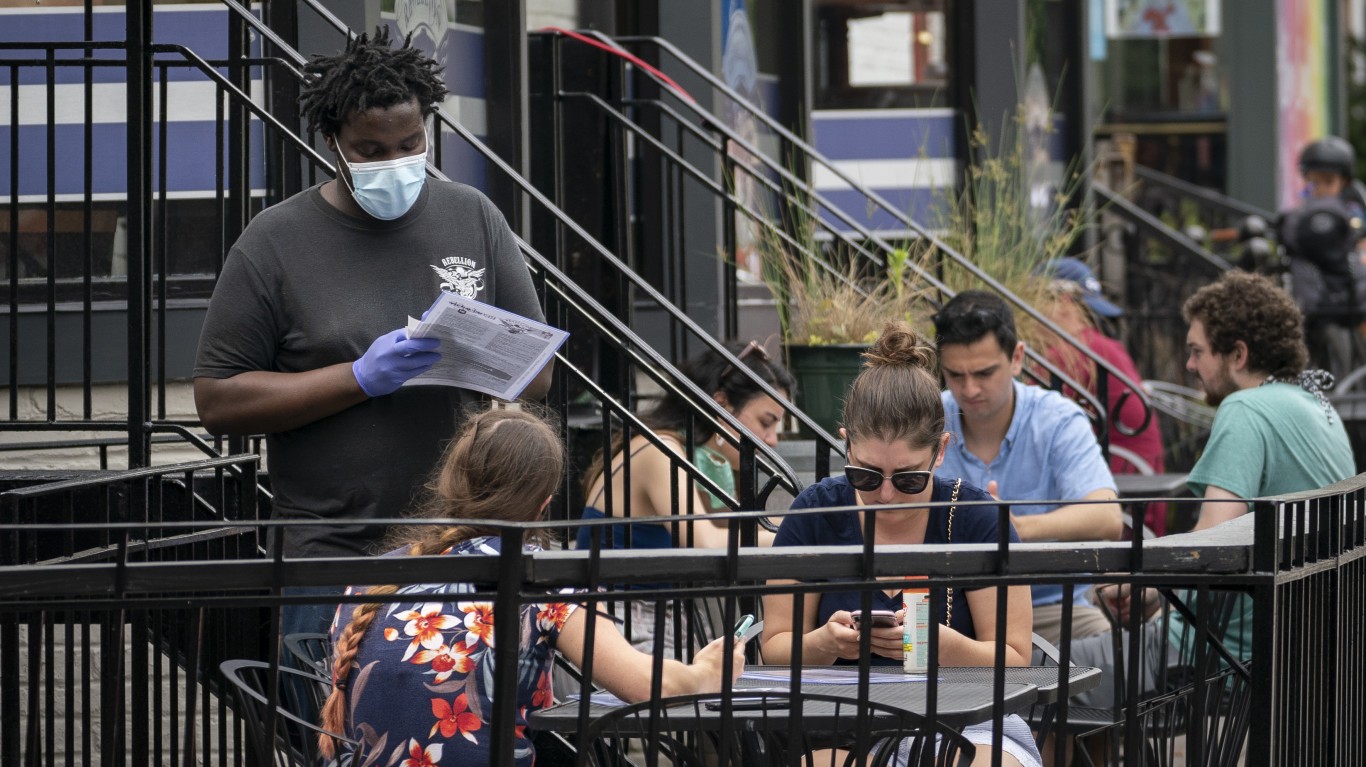
Washington, D.C.
> Mask mandate Yes
> Indoor seating capacity: No indoor dining
> Maximum guests per table: Not applicable
According to an executive order issued by Mayor Muriel Bowser on July 22, face coverings are mandated whenever people “are likely to come into contact with another person” outside their own home. The rule applies to anyone over the age of 2 and requires that businesses, including restaurants, bar the maskless from entering. A Mayor’s Order dated Dec. 18 closed restaurants to indoor dining from Dec. 23 through Jan. 15. Outdoor dining and takeout and delivery may continue. The same order repeals capacity limits for retail food stores, providing that social distancing can be maintained.
West Virginia
> Mask mandate Yes
> Indoor seating capacity: 50%
> Maximum guests per table: Not specified
West Virginia’s initial mask mandate, issued in early July, required the wearing of face coverings in public but allowed people to remove them indoors if social distancing was possible. Gov. Jim Justice issued on Nov. 14 an update to the order that did away with that provision. Anyone aged 9 or older is now required to wear a mask at all times in indoor public spaces. The restaurant section of the state’s guide to reopening, dubbed “West Virginia Strong — The Comeback,” strongly encourages the use of disposable utensils and containers and of disposable or no-touch menus, as well as the serving of drinks in cans and bottles where possible and the prioritization of takeout and curbside pickup services.
[in-text-ad-2]

Wisconsin
> Mask mandate Yes
> Indoor seating capacity: Not specified
> Maximum guests per table: 6
The emergency order issued by Gov. Tony Evers, which came into force on Aug. 1, requires anyone 5 years old and up to wear a mask in all indoor public spaces including in outdoor restaurant areas if there is someone from another household in the vicinity. The order applies until at least Jan. 19. Though the state doesn’t set a maximum indoor occupancy limit, it requires that capacity be reduced to allow for adequate social distancing. State regulations note that outdoor smoking patios should be closed or limited to one person at a time.

Wyoming
> Mask mandate Yes
> Indoor seating capacity: Not specified
> Maximum guests per table: 6 (unlimited for members of the same household)
A mask order requiring face coverings in restaurants as well as most other indoor public spaces went into effect Dec. 9 and will remain in effect through at least Jan. 8. It applies to those 12 years of age and older, though masks are encouraged for those between 3 and 11. Restaurants are required to close by 10 p.m. nightly, though takeout and delivery may continue after that time. The Wyoming Department of Health recommends that establishments ask customers to stay in their cars while waiting for their table to be ready.
Methodology
To find information on each state’s limits for indoor dining capacity, table size, mask requirements, and other COVID-19-related protocols, 24/7 Tempo consulted the National Restaurant Association’s Restaurant Law Center Official Return to Work State Guidelines for Foodservice Establishments (updated Dec. 16), the Coronavirus Restrictions and Mask Mandates for All 50 States published by the New York Times (updated Dec. 24), the State-by-State Guide to Face Mask Requirements published by the AARP (updated Dec. 24), and the State-by-State Guide to Coronavirus-Related Restrictions at Restaurants published by OpenTable (updated Dec. 22), as well as state coronavirus websites and the texts of governors or mayors’ executive orders from most of the states represented here.
Want to Retire Early? Start Here (Sponsor)
Want retirement to come a few years earlier than you’d planned? Or are you ready to retire now, but want an extra set of eyes on your finances?
Now you can speak with up to 3 financial experts in your area for FREE. By simply clicking here you can begin to match with financial professionals who can help you build your plan to retire early. And the best part? The first conversation with them is free.
Click here to match with up to 3 financial pros who would be excited to help you make financial decisions.
Have questions about retirement or personal finance? Email us at [email protected]!
By emailing your questions to 24/7 Wall St., you agree to have them published anonymously on a673b.bigscoots-temp.com.
By submitting your story, you understand and agree that we may use your story, or versions of it, in all media and platforms, including via third parties.
Thank you for reading! Have some feedback for us?
Contact the 24/7 Wall St. editorial team.
 24/7 Wall St.
24/7 Wall St.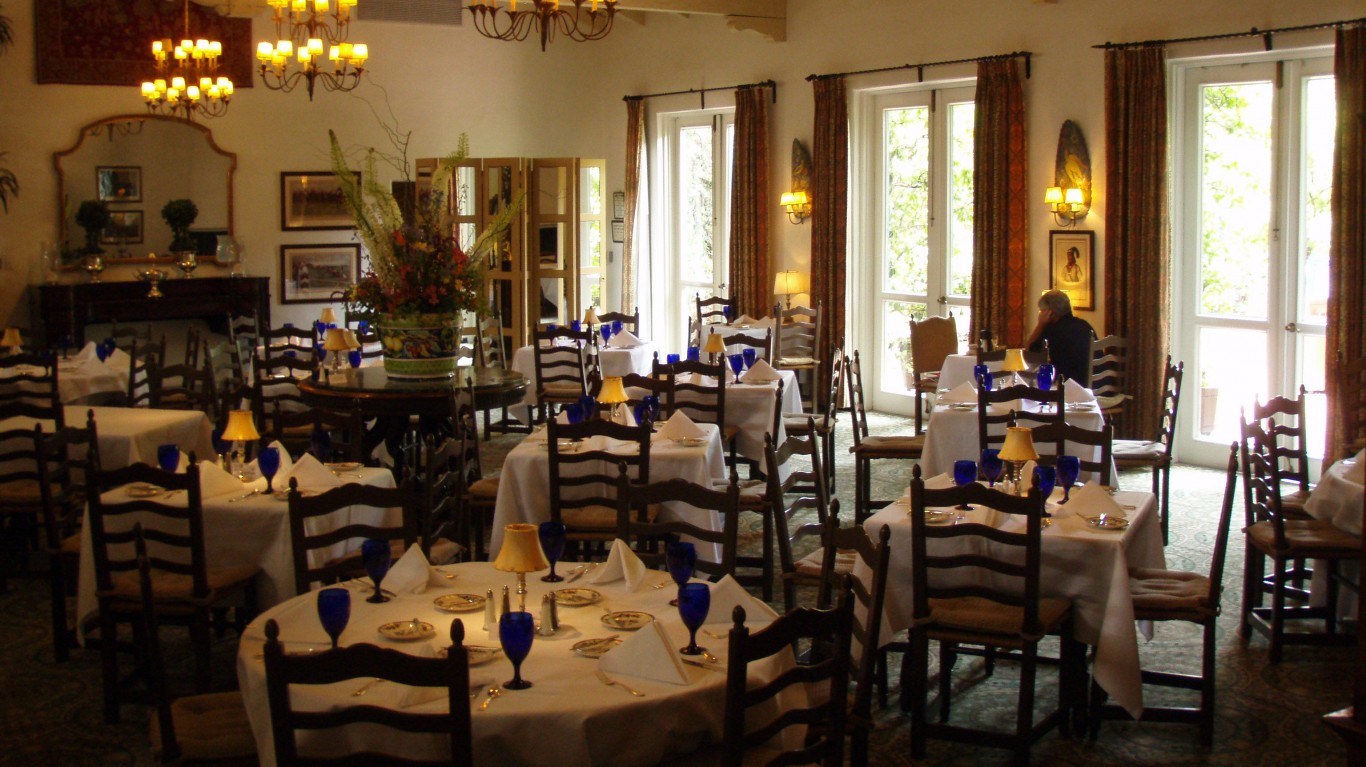
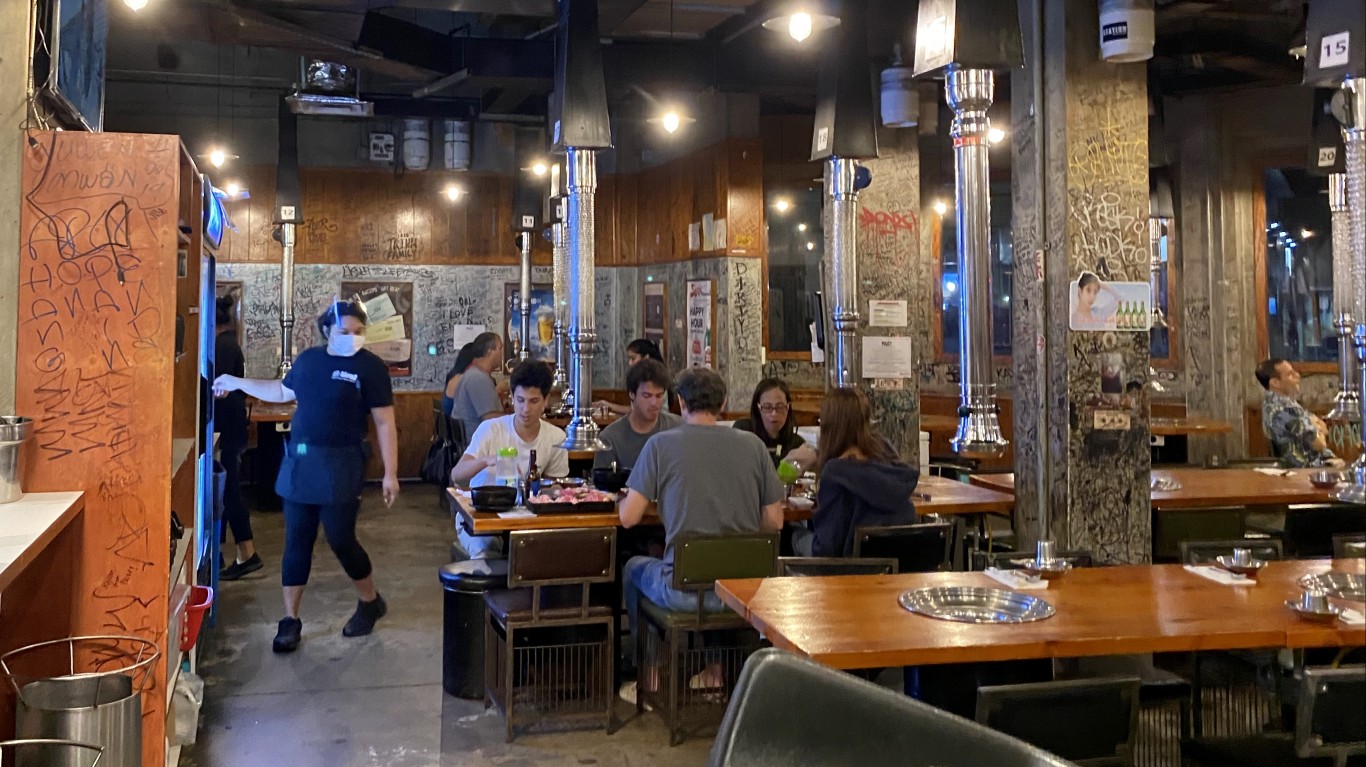

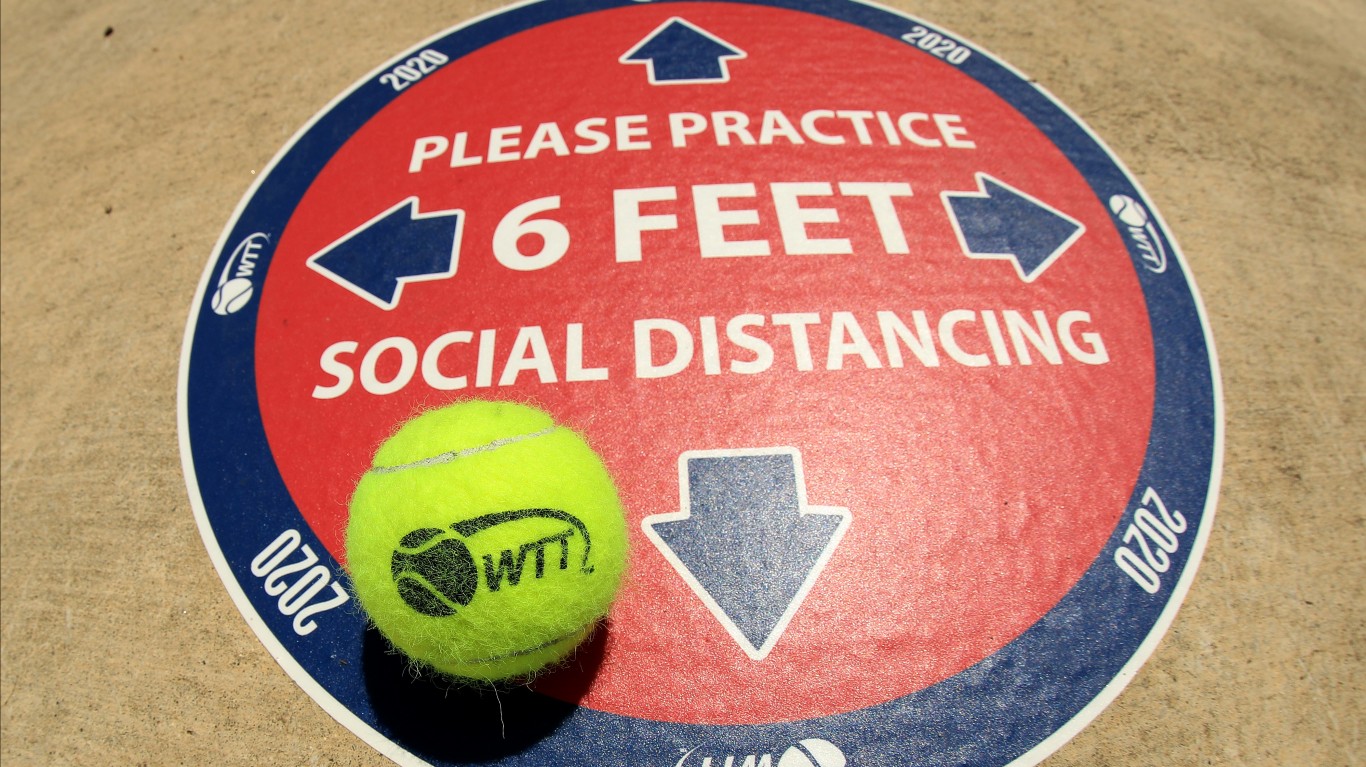 24/7 Wall St.
24/7 Wall St.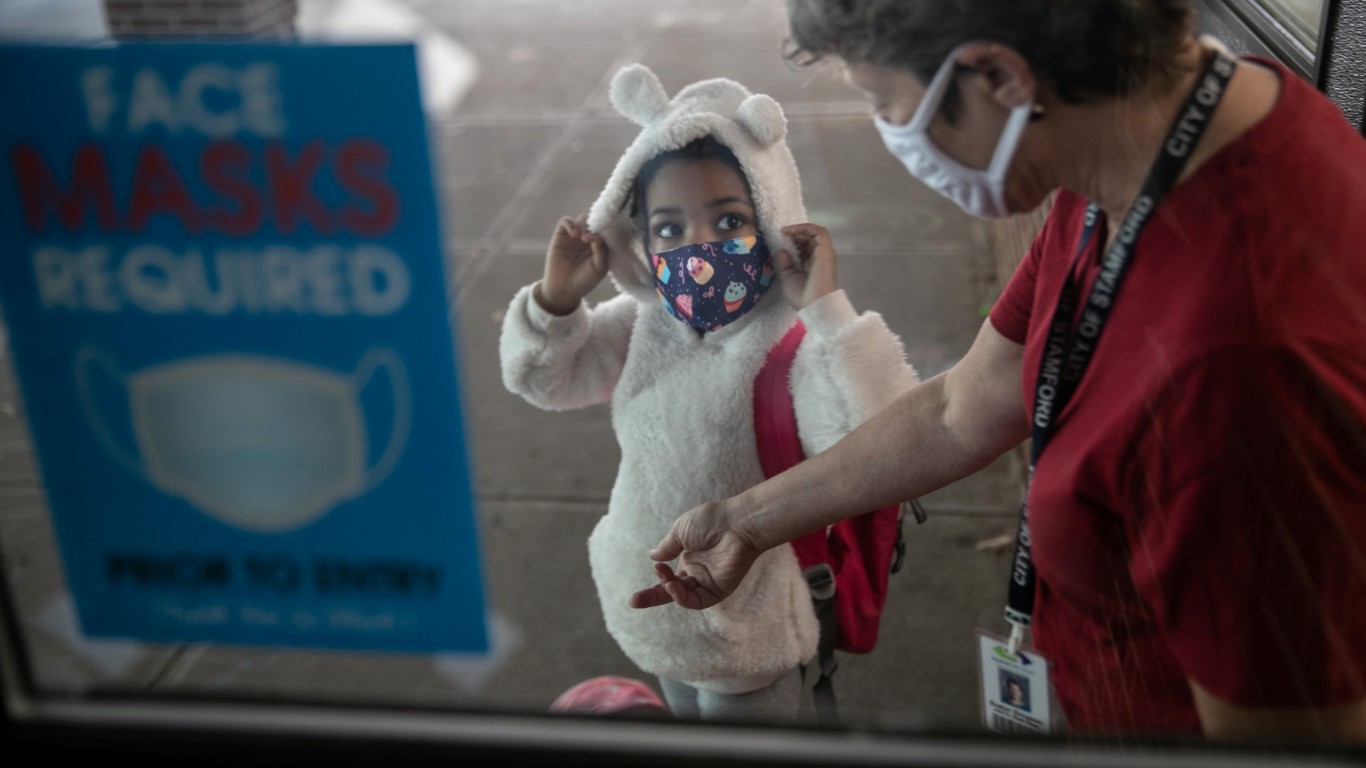 24/7 Wall St.
24/7 Wall St.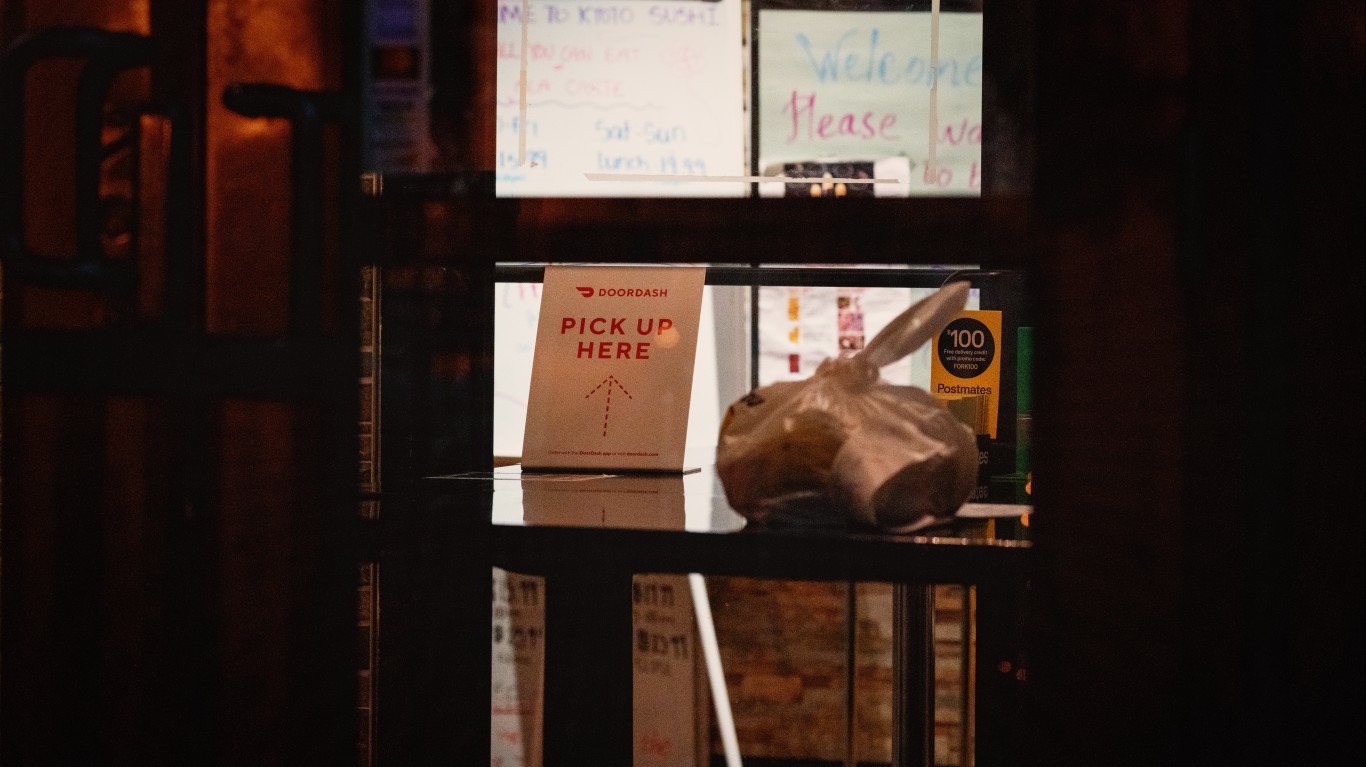
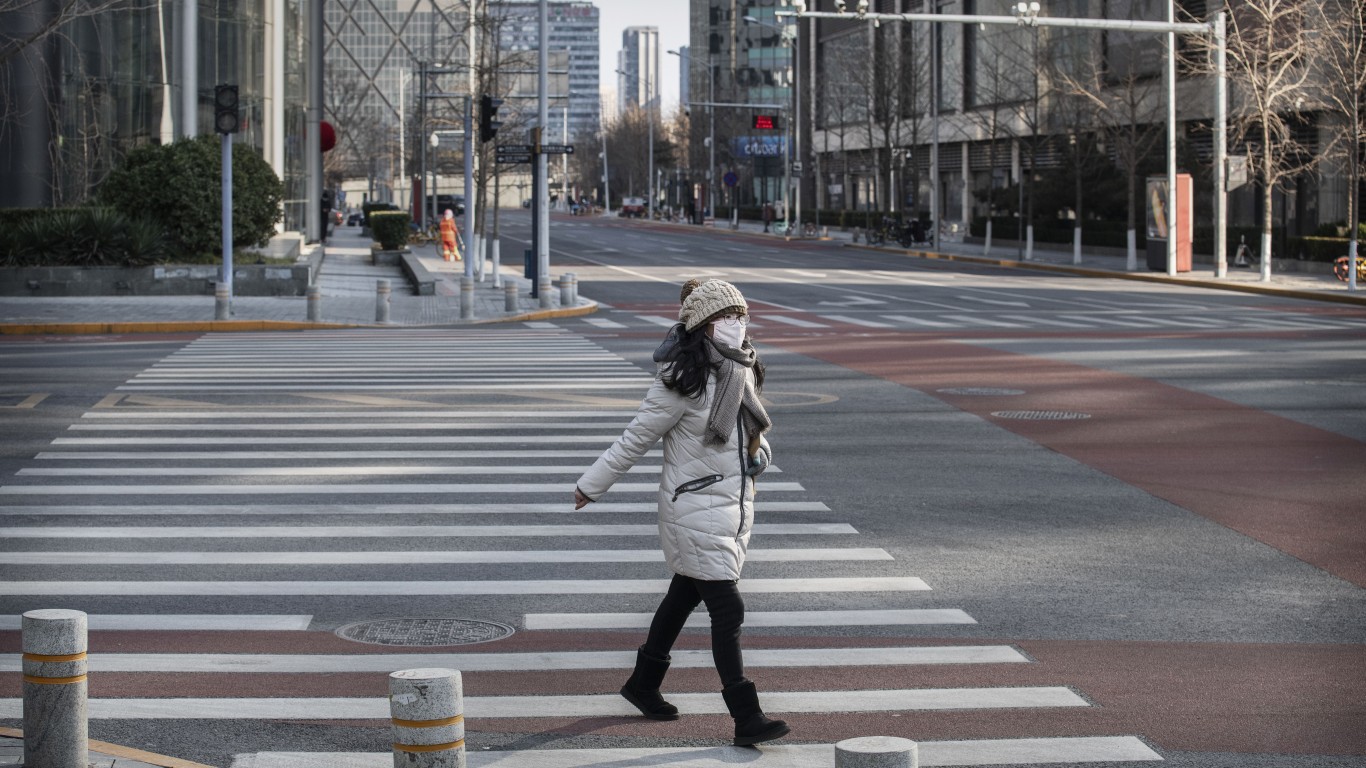 24/7 Wall St.
24/7 Wall St.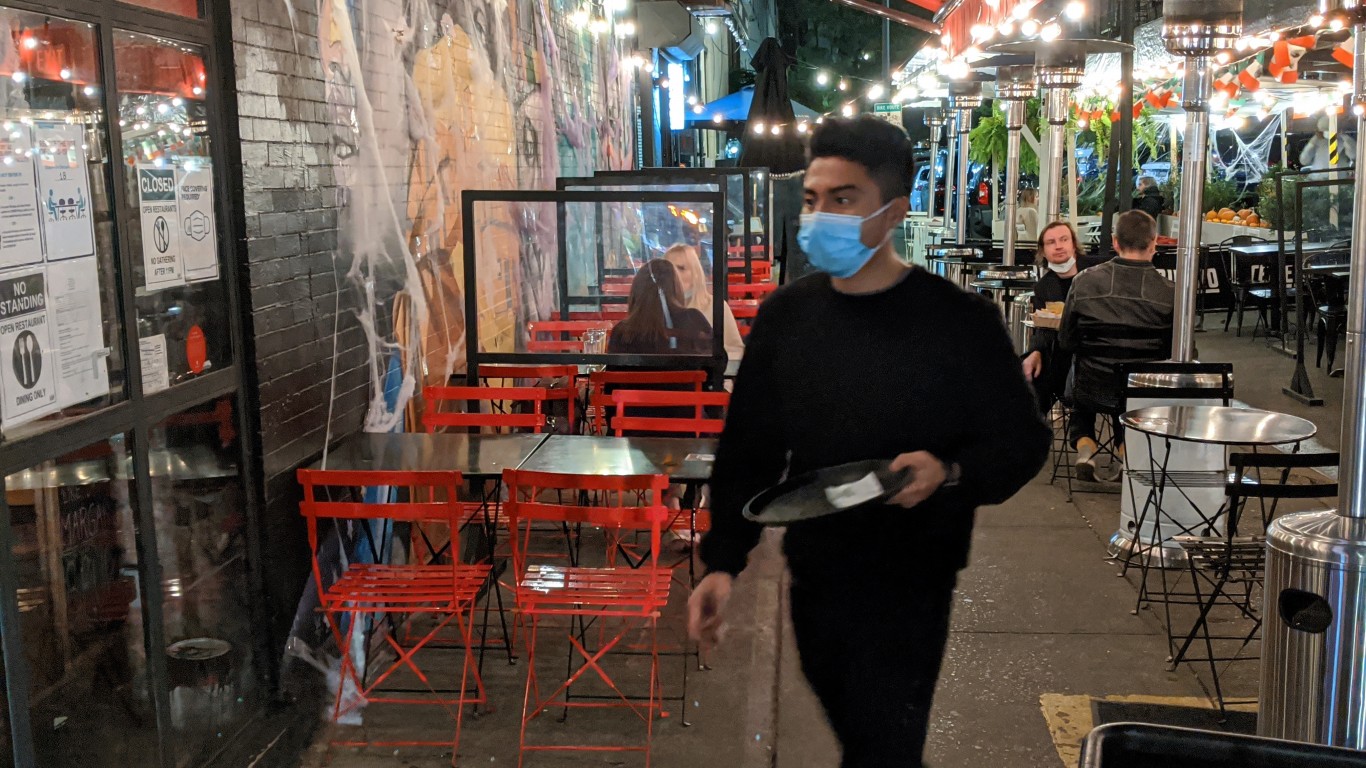
 24/7 Wall St.
24/7 Wall St.
